#and she wanted to teach him about Traditional Scottish Culture
Explore tagged Tumblr posts
Note
Oh my god, as an American living in Scotland I’ve had so many people pull this sort of shit on me when I go back home. “Oh, it must be like a fairy tale!” “Oh, what’s the culture like? It must be so different!” “Oh, have you seen Outlander?”
Sure! Why don’t you visit and I’ll take you to the magical village of Leith? Or Aberdeen! Let’s do Aberdeen!
If you want to “reconnect with your roots”, just come visit the country. (And don’t brag about being 1.432% Scottish while you’re here.) Otherwise it’s just historical LARPing at best and protofascist at worst and tbh most people who ask me about what it’s like living here seem to think it’s still like Outlander which is a whole other category of what.
(To be fair, Scotland is my favorite place I’ve ever lived. I’ve had wonderful times in both Leith and Aberdeen. The only reason I’d ever want to leave are the Tories down in Westminster. But come on, America. Come on.)
my family’s Scottish but we’ve lost touch due to living so long in the US- do you have any suggestions on how to reconnect to our cultural roots?
Look there’s nothing wrong with being interested in your ancestors but outside of America this conversation is pretty icky.
I’d rather be honest and tell you that you’re probably not going to unlock some deep cultural connection by finding a tartan.
You’re more than welcome to take an interest in contemporary Scotland or Scottish history, but I’d make sure it’s a genuine interest first.
#probably not my place to rant#but someone messaged me the other day because she has a student who's moving to scotland#and she wanted to teach him about Traditional Scottish Culture#and got a little pissy when I told her it wasn't going to be a huge culture shock for the kid#things are just more jovial#people tend to tease more easily#and the snacks are different so he should stock up on american chips#she was imagining like that they have some sort of elaborate english tea every afternoon#I'm like I have no Scottish friends who do that#the biggest culture shock for me was whatever it is that passes for mexican food#and the fact that Nicola Sturgeon was such a good first minister#especially considering I moved here during the Trump administration
2K notes
·
View notes
Text
Anonymous asked: I have always appreciated your thoughtful views on the defence of the British monarchy, and as a university historian it’s reassuring to see someone using history to make invalubale insights to a controversial institution. I wonder what are your own thoughts on the passing of Prince Philip and what his legacy might be? Was he a gaffe prone racist and a liability to the Queen?
I know you kindly got in touch and identified yourself when you felt I was ignoring your question. I’m glad we cleared that up via DM. The truth is as I said and I’m saying here is that I had to let some time pass before I felt I could reasonably answer this question. Simply because - as you know as someone who teaches history at university - distance is good to make a sober appraisal rather than knee jerk in the moment judgements.
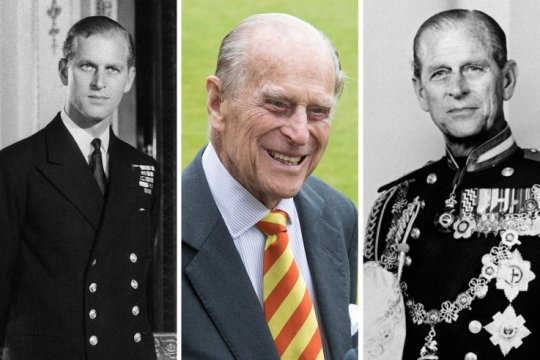
Contrary to what some might think I’m not really a fan girl when it comes to the royal family. I don’t religiously follow their every movement or utterance especially as I live in Paris and therefore I don’t really care about tabloid tittle tattle. I only get to hear of anything to do with the royal family when I speak to my parents or my great aunts and uncles for whom the subject is closer to their heart because of the services my family has rendered over past generations to the monarchy and the older (and dying) tight knit social circles they travel in.
Like Walter Bagehot, I’m more interested in the monarchy as an institution and its constitutional place within the historical, social, and political fabric of Britain and its continued delicate stabilising importance to that effect. It was Walter Bagehot, the great constitutional scholar and editor the Economist magazine, who said, “The mystic reverence, the religious allegiance, which are essential to a true monarchy, are imaginative sentiments that no legislature can manufacture in any people.” In his view, a politically-inactive monarchy served the best interests of the United Kingdom; by abstaining from direct rule, the monarch levitated above the political fray with dignity, and remained a respected personage to whom all subjects could look to as a guiding light.
Even as a staunch monarchist I freely confess that there has always been this odd nature of the relationship between hereditary monarchy and a society increasingly ambivalent about the institution. To paraphrase Bagehot again, there has been too much ‘daylight’ shone onto the ‘magic’ of the monarchy because we are obsessed with personalities as celebrities.
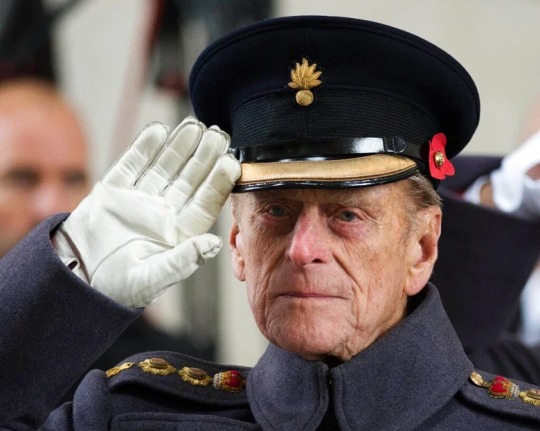
Having said that I did feel saddened by the passing of Prince Philip, the Duke of Edinburgh. After the Queen, he was my favourite royal. Anne, Princess Royal, would come next because she is very much like her father in temperament, humour, and character, so unlike her other brothers.
I have met the late Prince Philip when I was serving in the army in a few regimental meet-and-greet situations - which as you may know is pretty normal given that members of the royal family serve as honorary colonel-in-chiefs (patrons in effect) of all the British army regiments and corps.I also saw him at one or two social events such the annual charitable Royal Caledonian Ball (he’s an expert scottish reeler) and the Guards Polo Club where my older brothers played.
I’ll will freely confess that he was the one royal I could come close to identify with because his personal biography resonated with me a great deal.
Let’s be honest, the core Windsor family members, born to privilege, are conditioned and raised to be dull. Perhaps that’s a a tad harsh. I would prefer the term ‘anonymously self-effacing’, just another way of saying ‘for God’s sake don’t draw attention to yourself by saying or doing anything even mildly scandalous or political lest it invites public opprobrium and scrutiny’. The Queen magnificently succeeds in this but the others from Charles down just haven’t (with the exception of Princess Anne).
However, many people forget this obvious fact that it’s the incoming husbands and wives who marry into the Windsor family who are relied upon to bring colour and even liven things up a little. And long before Kate Middleton, Meghan Markle (very briefly), or Lady Diana Spencer, were the stars of ‘The Firm’- a phrase first coined by King George VI, Queen Elizabeth II's father who ruled from 1936 to 1952, who was thought to have wryly said, "British royals are 'not a family, we're a firm,” - it was Prince Philip who really livened things up and made the greater impact on the monarchy than any of them in the long term.
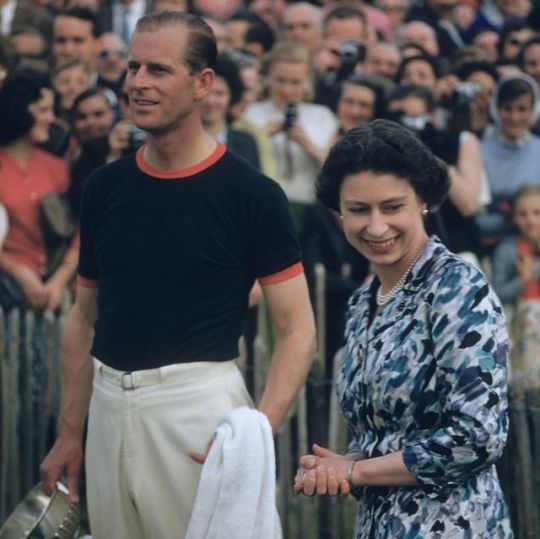
Prince Philip’s passing belied the truth of a far more complex individual: a destitute and penniless refugee Greek-Danish prince with a heart breaking backstory that could have been penned by any 19th Century novelist, and also eagle eyed reformer who tried to drag the royal family into the 20th century. At the core of the man - lost scion of a lost European royal dynasty, a courageous war veteran, and Queen’s consort - were values in which he attempted to transform and yet maintain much older inherited traditions and attitudes. Due to his great longevity, Philip’s life came to span a period of social change that is almost unprecedented, and almost no one in history viewed such a transformation from the front row.
Prince Philip would seem to represent in an acute form the best of the values of that era, which in many ways jar with today’s. He had fought with great courage in the war as a dashing young naval officer; he was regularly rude to foreigners, which was obviously a bonus to all Brits. He liked to ride and sail and shoot things. He was unsentimental almost to a comic degree, which felt reassuring at a time when a new-found emotional incontinence made many feel uncomfortable. Outrageous to some but endearing to others, he was the sort of man you’d want to go for a pint with, perhaps the ultimate compliment that an Englishman can pay to another Englishman. This has its own delicious irony as he wasn’t really an Englishman.
There are 4 takeways I would suggest in my appraisal of Prince Philip that stand out for me. So let me go through each one.
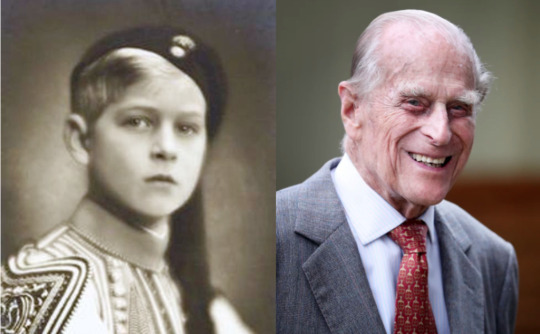
1. Prince Philip’s Internationalism
It may seem odd for me to say that Prince Philip wasn’t English but he wasn’t an Englishman in any real sense. He was a wretch of the world - stateless, homeless, and penniless. That the Prince of Nowhere became the British Monarchy’s figurehead was more than fitting for a great age of migration and transition in which the Royal Family survived and even flourished. That he was able to transform himself into the quintessential Englishman is testimony not just to his personal determination but also to the powerful cultural pull of Britishness.
He was born on a kitchen table in Corfu in June 1921. A year later in 1922, Philip, as the the great-great-grandson of Queen Victoria and nephew of Constantine I of Greece, was forced to flee with his family after the abdication of Constantine. He grew up outside Paris speaking French; ethnically he was mostly German although he considered himself Danish, his family originating from the Schleswig border region. He was in effect, despite his demeanour of Royal Navy officer briskness, a citizen of nowhere in an age of movement. From a very young age he was a stateless person, nationally homeless. Indeed, Philip was an outsider in a way that even Meghan Markle could never be; at his wedding in 1947, his three surviving sisters and two brothers-in-law were not permitted to attend because they were literally Britain’s enemies, having fought for the Germans. A third brother-in-law had even been in the SS, working directly for Himmler, but had been killed in the conflict.
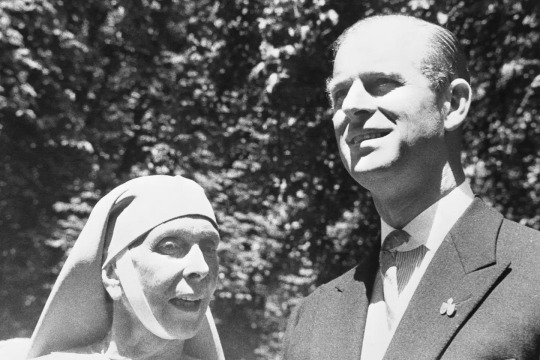
Even his religion was slightly exotic. He was Greek Orthodox until he converted to Anglicanism on marrying Elizabeth - what with his wife due to become supreme head of the Church and everything - but his ties with eastern Christianity remained. His great-aunts Princess Elisabeth of Hesse and by Rhine and Tsarina Alexandra are both martyrs of the Russian Orthodox Church, having been murdered by the Bolsheviks; Philip’s mother went on to become an Orthodox nun and a “Righteous Among the Nations” for saving a Jewish family during the Nazi occupation of Greece, spending much of her time in squalid poverty.
His parents were part of the largely German extended aristocracy who ruled almost all of Europe before it all came crashing down in 1918. When he died, aged 99, it marked a near-century in which all the great ideological struggles had been and gone; he had been born before the Soviet Union but outlived the Cold War, the War on Terror and - almost - Covid-19.
The world that Philip was born into was a far more violent and dangerous place than ours. In the year he was born, Irish rebels were still fighting Black and Tans; over the course of 12 months the Spanish and Japanese prime ministers were assassinated, there was a coup in Portugal and race riots in the United States. Germany was rocked by violence from the far-Left and far-Right, while in Italy a brutal new political movement, the Fascists, secured 30 seats in parliament, led by a trashy journalist called Benito Mussolini.
The worst violence, however, took place in Greece and Turkey. Following the defeat of the Ottoman Empire, what remained of Turkey was marked for permanent enfeeblement by the Allies. But much to everyone’s surprise the country’s force were roused by the brilliant officer Mustafa Kemal, who led the Turks to victory. Constantinople was lost to Christendom for good and thousands of years of Hellenic culture was put to the flames in Smyrna.
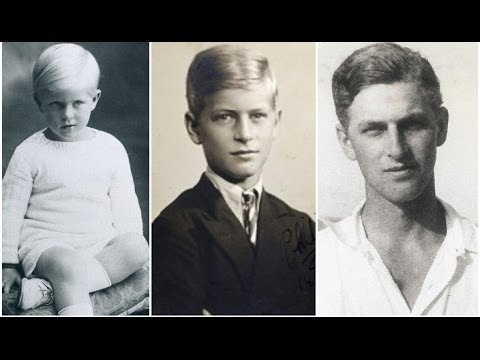
The Greek royal family, north German imports shipped in during the 19th century, bore much of the popular anger for this disaster. King Constantine fled to Italy, and his brother Andrew was arrested and only escaped execution through the intervention of his relative Britain’s George V. Andrew’s wife Alice, their four daughters and infant son Philip fled to France, completely impoverished but with the one possession that ensures that aristocrats are never truly poor: connections.
Philip had a traumatic childhood. He was forged by the turmoil of his first decade and then moulded by his schooling. His early years were spent wandering, as his place of birth ejected him, his family disintegrated and he moved from country to country, none of them ever his own. When he was just a year old, he and his family were scooped up by a British destroyer from his home on the Greek island of Corfu after his father had been condemned to death. They were deposited in Italy. One of Philip's first international journeys was spent crawling around on the floor of the train from an Italian port city, "the grubby child on the desolate train pulling out of the Brindisi night," as his older sister Sophia later described it.
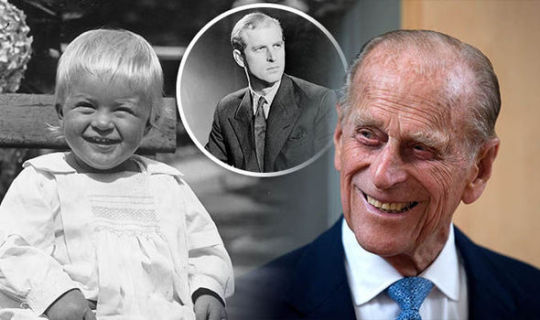
In Paris, he lived in a house borrowed from a relative; but it was not destined to become a home. In just one year, while he was at boarding school in Britain, the mental health of his mother, Princess Alice, deteriorated and she went into an asylum; his father, Prince Andrew, went off to Monte Carlo to live with his mistress. "I don't think anybody thinks I had a father," he once said. Andrew would die during the war. Philip went to Monte Carlo to pick up his father's possessions after the Germans had been driven from France; there was almost nothing left, just a couple of clothes brushes and some cuff-links.
Philip’s four sisters were all much older, and were soon all married to German aristocrats (the youngest would soon die in an aeroplane crash, along with her husband and children). His sisters became ever more embroiled in the German regime. In Scotland going to Gordonstoun boarding school, Philip went the opposite direction, becoming ever more British. Following the death of his sister Cecilie in a plane crash in 1937, the gulf widened. As the clouds of conflict gathered, the family simply disintegrated. With a flash of the flinty stoicism that many would later interpret, with no little justification, as self-reliance to the point of dispassion, the prince explained: “It’s simply what happened. The family broke up… I just had to get on with it. You do. One does.”
In the space of 10 years he had gone from a prince of Greece to a wandering, homeless, and virtually penniless boy with no-one to care for him. He got through it by making a joke of everything, and by being practical.
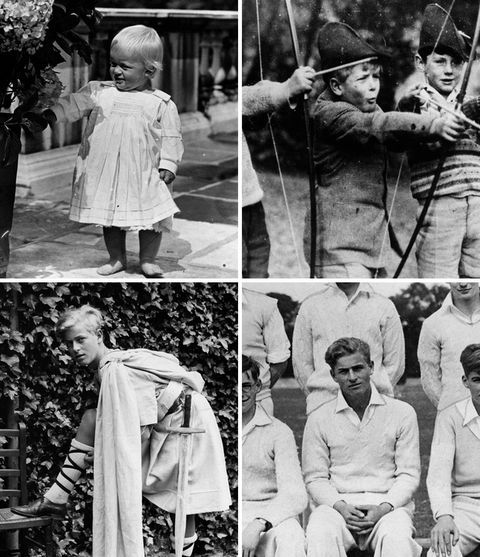
By the time he went to Gordonstoun, a private boarding school on the north coast of Scotland, Philip was tough, independent and able to fend for himself; he'd had to be. Gordonstoun would channel those traits into the school's distinct philosophy of community service, teamwork, responsibility and respect for the individual. And it sparked one of the great passions of Philip's life - his love of the sea. It was Gordonstoun that nurtured that love through the maturation of his character.
Philip adored the school as much as his son Charles would despise it. Not just because the stress it put on physical as well as mental excellence - he was a great sportsman. But because of its ethos, laid down by its founder Kurt Hahn, a Jewish exile from Nazi Germany.
Hahn first met Philip as a boy in Nazi Germany. Through a connection via one of his sister’s husbands, Philip, the poor, lonely boy was first sent off to a new school - in Nazi Germany. Which was as fun as can be imagined. Schloss Salem had been co-founded by stern educator called Kurt Hahn, a tough, discipline-obsessed conservative nationalist who saw civilisation in inexorable decline. But by this stage Hahn, persecuted for being Jewish in Nazi Germany, had fled to Britain, and Philip did not spend long at the school either, where pressure from the authorities was already making things difficult for the teachers. Philip laughed at the Nazis at first, because their salute was the same gesture the boys at his previous school had to make when they wanted to go to the toilet, but within a year he was back in England, a refugee once again.
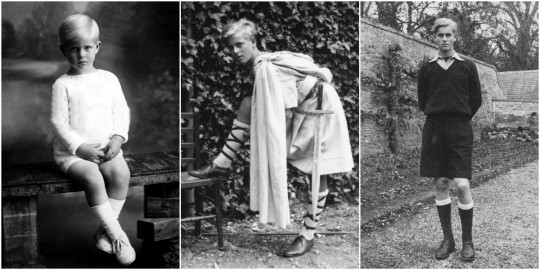
Philip happily attended Hahn’s new school, Gordonstoun, which the strict disciplinarian had set up in the Scottish Highlands. Inspired by Ancient Sparta, the boys (and then later girls) had to run around barefoot and endure cold showers, even in winter, the whole aim of which was to drive away the inevitable civilisational decay Hahn saw all around him. To 21st century ears it sounds like hell on earth, yet Philip enjoyed it, illustrating just what a totally alien world he came from.
That ethos became a significant, perhaps the significant, part of the way that Philip believed life should be lived. It shines through the speeches he gave later in his life. "The essence of freedom," he would say in Ghana in 1958, "is discipline and self-control." The comforts of the post-war era, he told the British Schools Exploring Society a year earlier, may be important "but it is much more important that the human spirit should not be stifled by easy living". And two years before that, he spoke to the boys of Ipswich School of the moral as well as material imperatives of life, with the "importance of the individual" as the "guiding principle of our society".
It was at Gordonstoun one of the great contradictions of Philip's fascinating life was born. The importance of the individual was what in Kurt Hahn's eyes differentiated Britain and liberal democracies from the kind of totalitarian dictatorship that he had fled. Philip put that centrality of the individual, and individual agency - the ability we have as humans to make our own moral and ethical decisions - at the heart of his philosophy.
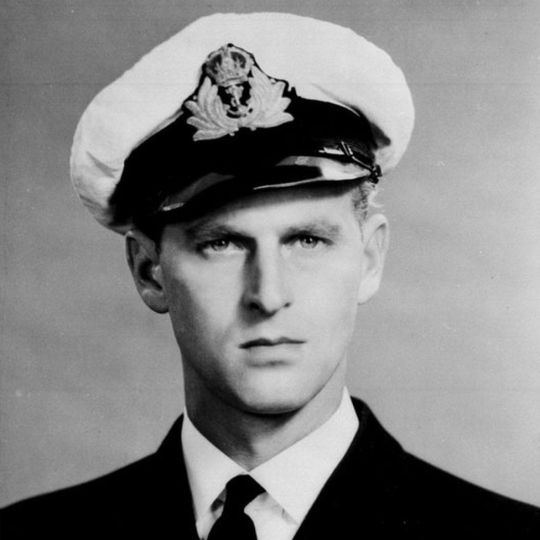
At Dartmouth Naval College in 1939, the two great passions of his life would collide. He had learned to sail at Gordonstoun; he would learn to lead at Dartmouth. And his driving desire to achieve, and to win, would shine through. Despite entering the college far later than most other cadets, he would graduate top of his class in 1940. In further training at Portsmouth, he gained the top grade in four out of five sections of the exam. He became one of the youngest first lieutenants in the Royal Navy.
The navy ran deep in his family. His maternal grandfather had been the First Sea Lord, the commander of the Royal Navy; his uncle, "Dickie" Mountbatten, had command of a destroyer while Philip was in training. In war, he showed not only bravery but guile. It was his natural milieu. "Prince Philip", wrote Gordonstoun headmaster Kurt Hahn admiringly, "will make his mark in any profession where he will have to prove himself in a trial of strength".
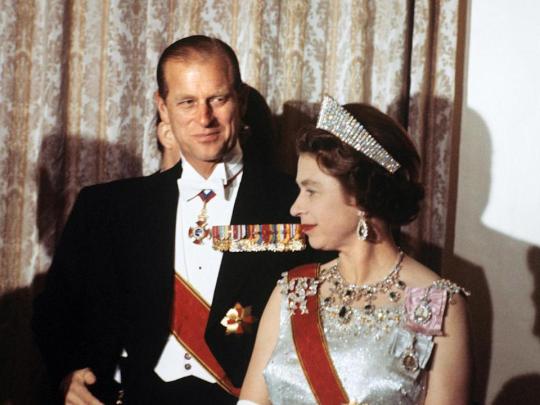
2. Prince Philip and the modernisation of the monarchy
In his own words, the process of defining what it meant to be a royal consort was one of “trial and error.” Speaking with BBC One’s Fiona Bruce in 2011, Philip explained, “There was no precedent. If I asked somebody, 'What do you expect me to do?' they all looked blank. They had no bloody idea, nobody had much idea.” So he forged for himself a role as a moderniser of the monarchy.
He could not have had much idea back in 1939. Back then in Dartmouth in 1939, as war became ever more certain, the navy was his destiny. He had fallen in love with the sea itself. "It is an extraordinary master or mistress," he would say later, "it has such extraordinary moods." But a rival to the sea would come.
When King George VI toured Dartmouth Naval College, accompanied by Philip's uncle, he brought with him his daughter, Princess Elizabeth. Philip was asked to look after her. He showed off to her, vaulting the nets of the tennis court in the grounds of the college. He was confident, outgoing, strikingly handsome, of royal blood if without a throne. She was beautiful, a little sheltered, a little serious, and very smitten by Philip.
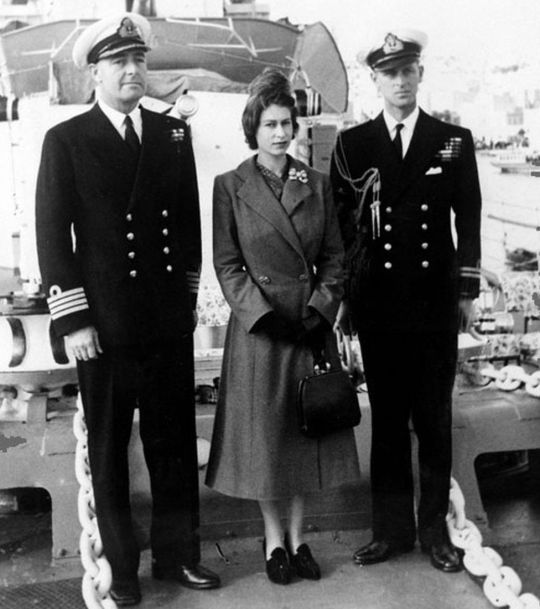
Did he know then that this was a collision of two great passions? That he could not have the sea and the beautiful young woman? For a time after their wedding in 1948, he did have both. As young newlyweds in Malta, he had what he so prized - command of a ship - and they had two idyllic years together. But the illness and then early death of King George VI brought it all to an end.
He knew what it meant, the moment he was told. Up in a lodge in Kenya, touring Africa, with Princess Elizabeth in place of the King, Philip was told first of the monarch's death in February 1952. He looked, said his equerry Mike Parker, "as if a ton of bricks had fallen on him". For some time he sat, slumped in a chair, a newspaper covering his head and chest. His princess had become the Queen. His world had changed irrevocably.
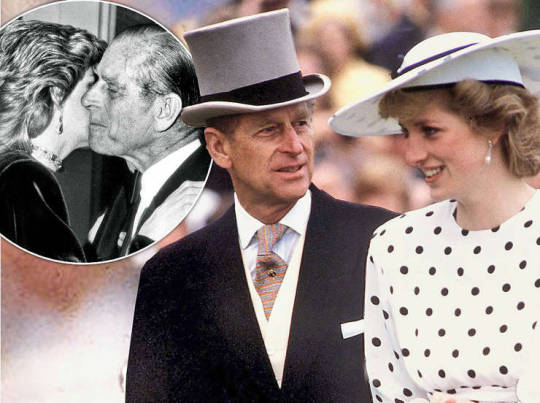
While the late Princess Diana was later to famously claim that there were “three people” in her marriage - herself, Prince Charles and Camilla - there were at least 55 million in Philip and Elizabeth’s. As Elizabeth dedicated her life to her people at Westminster Abbey at the Coronation on June 2, 1953, it sparked something of an existential crisis in Philip. Many people even after his death have never really understood this pivotal moment in Philip’s life. All his dreams of being a naval officer and a life at sea as well as being the primary provider and partner in his marriage were now sacrificed on the altar of duty and love.
With his career was now over, and he was now destined to become the spare part. Philip, very reasonably, asked that his future children and indeed his family be known by his name, Mountbatten. In effect he was asking to change the royal family’s name from the House of Windsor to the House of Mountbatten. But when Prime Minister Winston Churchill got wind of it as well as the more politically agile courtiers behind the Queen, a prolonged battle of wits ensued, and it was one Philip ultimately lost. It was only in 1957 that he accepted the title of “Prince.”
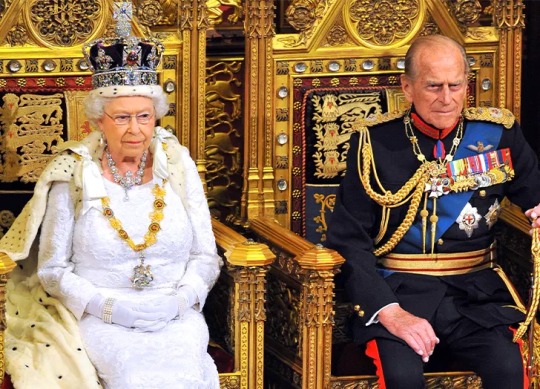
Even though he had almost lost everything dear to him and his role now undefined, he didn’t throw himself a pity party. He just got on with it. Philip tried to forge his own distinct role as second fiddle to the woman who had come to represent Great Britain. He designated himself the First Officer of the Good Ship Windsor. He set about dusting off some of the cobwebs off the throne and letting some daylight unto the workings of the monarchy by advocating reasonable amount of modernisation of the monarchy.
He had ideas about modernising the royal family that might be called “improving optics” today. But in his heart of hearts he didn’t want the monarchy to become a stuffy museum piece. He envisaged a less stuffy and more popular monarchy, relevant to the lives of ordinary people. Progress was always going to be incremental as he had sturdy opposition from the old guard who wanted to keep everything as it was, but nevertheless his stubborn energy resulted in significant changes.
When a commission chaired by Prince Philip proposed broadcasting the 1953 investiture ceremony that formally named Elizabeth II as queen on live television, Prime Minister Winston Churchill reacted with outright horror, declaring, “It would be unfitting that the whole ceremony should be presented as if it were a theatrical performance.” Though the queen had initially voiced similar concerns, she eventually came around to the idea, allowing the broadcast of all but one segment of the coronation. Ultimately, according to the BBC, more than 20 million people tuned in to the televised ceremony - a credit to the foresight of Philip.
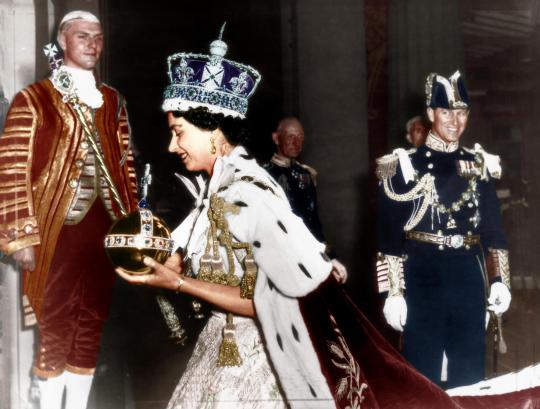
Elizabeth’s coronation marked a watershed moment for a monarchy that has, historically, been very hands off, old-fashioned and slightly invisible. Over the following years, the royals continued to embrace television as a way of connecting with the British people: In 1957, the queen delivered her annual Christmas address during a live broadcast. Again, this was Philip’s doing when he cajoled the Queen to televise her message live. He even helped her in how to use the teleprompter to get over her nerves and be herself on screen.
Four years later, in 1961, Philip became the first family member to sit for a television interview. It is hard for us to imagine now but back then it was huge. For many it was a significant step in modernising the monarchy.
Though not everything went to plan. Toward the end of the decade, the Windsors even invited cameras into their home. A 1969 BBC fly-on-the-wall documentary, instigated by Philip to show life behind the scenes, turned into an unmitigated disaster: “The Windsors” revealed the royals to be a fairly normal, if very rich, British upper-class family who liked barbecues, ice cream, watching television and bickering. The mystery of royalty took a hit below the waterline from their own torpedo, a self-inflicted wound from which they took a long time to recover. Shown once, the documentary was never aired again. But it had an irreversible effect, and not just by revealing the royals to be ordinary. By allowing the cameras in, Philip opened the lid to the prying eyes of the paparazzi who could legitimately argue that since the Royals themselves had sanctioned exposure, anything went. From then on, minor members of the House of Windsor were picked off by the press, like helpless tethered animals on a hunting safari.
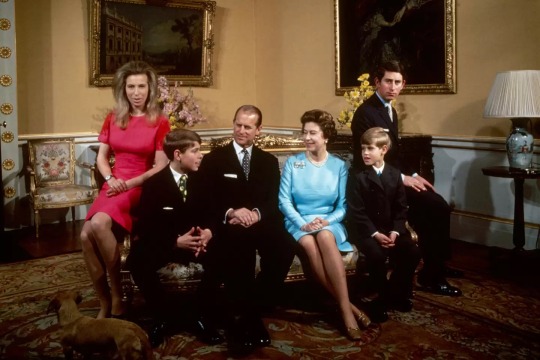
Prince Philip also took steps to reorganise and renovate the royal estates in Sandringham and Balmoral such as intercoms, modern dish washers, generally sought to make the royal household and the monarchy less stuffy, not to have so much formality everywhere.
Philip helped modernised the monarchy in other ways to acknowledge that the monarchy could be responsive to changes in society. It was Prince Philip - much to the chagrin of the haughty Princess Margaret and other stuffy old courtiers - who persuaded the Queen to host informal lunches and garden parties designed to engage a broader swath of the British public. Conversely, Prince Philip heartily encouraged the Queen (she was all for it apparently but was still finding her feet as a new monarch) to end the traditional practice of presenting debutantes from aristocratic backgrounds at court in 1952. For Philip and others it felt antiquated and out of touch with society. I know in speaking to my grandmother and others in her generation the decision was received with disbelief at how this foreign penniless upstart could come and stomp on the dreams of mothers left to clutch their pearls at the prospect there would be no shop window for their daughter to attract a suitable gentleman for marriage. One of my great aunts was over the moon happy that she never would have to go through what she saw as a very silly ceremony because she preferred her muddy wellies to high heels.
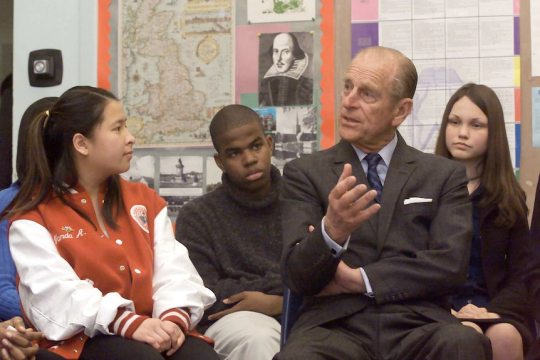
A former senior member of the royal household, who spent several years working as one of Prince Philip’s aides, and an old family friend, once told us around a family dinner table that the Duke of Edinburgh was undoubtedly given a sense of permanence by his marriage into the Royal Family that was missing from earlier years. But the royal aide would hastily add that Prince Philip, of course, would never see it that way.
Prince Philip’s attitude was to never brood on things or seek excuses. And he did indeed get on with the job in his own way - there should be no doubt that when it came to building and strengthening the Royal Family it was a partnership of equals with the Queen. Indeed contrary to Netflix’s hugely popular series ‘The Crown’ and its depiction of the royal marriage with Philip’s resentment at playing second fiddle, the prince recognised that his “first duty was to serve the Queen in the best way I could,” as he told ITV in 2011. Though this role was somewhat ill-suited to his dynamic, driven, and outspoken temperament, Philip performed it with utter devotion.
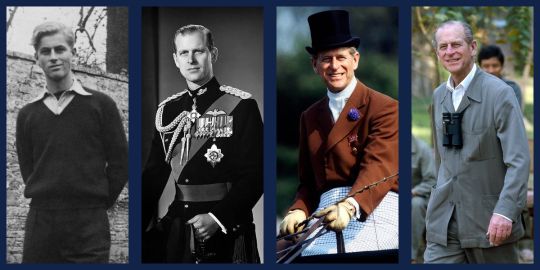
3. Prince Philip’s legacy
One could argue rightly that modernising the monarchy was his lasting legacy achievement. But he also tried to modernise a spent and exhausted Britain as it emerged from a ruinous war. When peace came, and with it eventual economic recovery, Philip would throw himself into the construction of a better Britain, urging the country to adopt scientific methods, embracing the ideas of industrial design, planning, education and training. A decade before Harold Wilson talked of the "white heat of the technological revolution", Philip was urging modernity on the nation in speeches and interviews. He was on top of his reading of the latest scientific breakthroughs and well read in break out innovations.
This interest in modernisation was only matched by his love for nature. As the country and the world became richer and consumed ever more, Philip warned of the impact on the environment, well before it was even vaguely fashionable. As president of the World Wildlife Fund (WWF) in the UK for more than 20 years from 1961, he was one of the first high-profile advocates of the cause of conservation and biological diversity at a time when it was considered the preserve of an eccentric few.
For a generation of school children in Britain and the Commonwealth though, his most lasting legacy and achievement will be the Duke of Edinburgh Awards (DofE). He set up the Duke of Edinburgh award, a scheme aimed at getting young people out into nature in search of adventure or be of service to their communities. It was a scheme that could match the legacy of Baden Powell’s scouts movement.
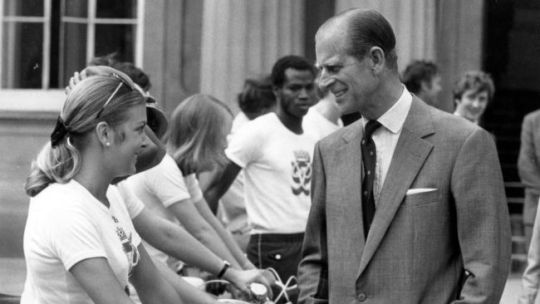
When Prince Philip first outlined his idea of a scheme to harness the values of his education at Gordonstoun by bringing character-building outdoor pursuits to the many rather than the fee-paying few, he received short shrift from the government of the day. The then minister of education, Sir David Eccles responded to the Duke’s proposal by saying: “I hear you’re trying to invent something like the Hitler Youth.” Undeterred he pushed on until it came to fruition.
I’m so glad that he did. I remember how proud I was for getting my DofE Awards while I was at boarding school. With the support of great mentors I managed to achieve my goals: collecting second-hand English books for a literacy programme for orphaned street children in Delhi, India with a close Indian school friend and her family; and completing a 350 mile hike following St. Olav’s Pilgrimmage Trail from Selånger, on the east coast of Sweden, and ending at Nidaros Cathedral in Trondheim, on the west coast of Norway.
It continues to be an enduring legacy. Since its launch in 1956, the Duke of Edinburgh awards have been bestowed upon some 2.5 million youngsters in Britain and some eight million worldwide. For a man who once referred to himself as a “Greek princeling of no consequence”, his pioneering tutelage of these two organisations (alongside some 778 other organisations of which he was either president or a patron) would be sufficient legacy for most.
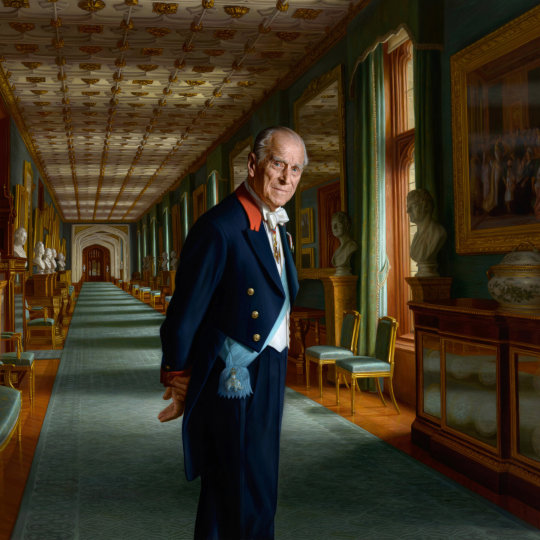
4. Prince Philip’s character
It may surprise some but what I liked most about Prince Philip was the very thing that helped him achieve so much and leave a lasting legacy: his character.
It is unhelpful to the caricature of Prince Philip as an unwavering but pugnacious consort whose chief talent was a dizzying facility in off-colour one-liners that he was widely read and probably the cleverest member of his family.
His private library at Windsor consists of 11,000 tomes, among them 200 volumes of poetry. He was a fan of Jung, TS Eliot, Shakespeare and the cookery writer Elizabeth David. As well as a lifelong fascination with science, technology and sport, he spoke fairly fluent French, painted and wrote a well received book on birds. It’s maddening to think how many underestimated his genuine intellect and how cultured he was behind the crusty exterior.
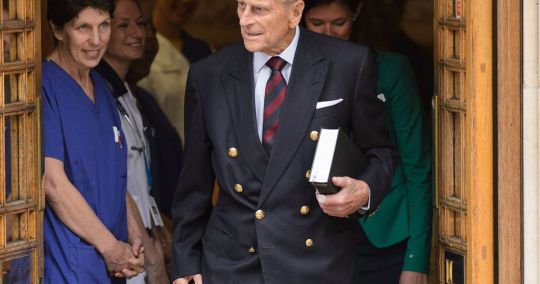
He didn’t have an entourage to fawn around him. He was the first to own a computer at Buckingham Palace. He answered his own phone and wrote and responded to his own correspondence. By force of character he fought the old guard courtiers at every turn to modernise the monarchy against their stubborn resistance.
Prince Philip was never given to self-analysis or reflection on the past. Various television interviewers tried without success to coerce him in to commenting on his legacy.But once when his guard was down he asked on the occasion of his 90th birthday what he was more proud of, he replied with characteristic bluntness: “I couldn’t care less. Who cares what I think about it, I mean it’s ridiculous.”
All of which neatly raises the profound aversion to fuss and the proclivity for tetchiness often expressed in withering put-downs that, for better or worse, will be the reflex memory for many of the Duke of Edinburgh. If character is a two edged sword so what of his gaffes?
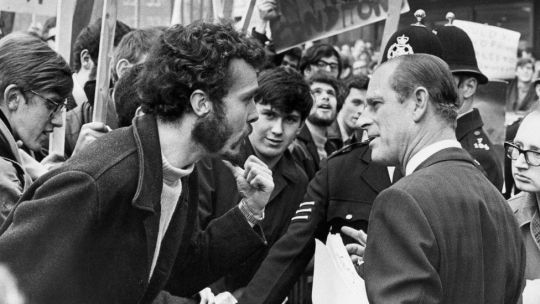
There is no doubt his cult status partly owed to his so-called legendary gaffes, of which there are enough to fill a book (indeed there is a book). But he was no racist. None of the Commonwealth people or foreign heads of state ever said this about him. Only leftist republicans with too much Twitter time on their hands screamed such a ridiculous accusation. They’re just overly sensitive snowflakes and being devoid of any humour they’re easily triggered.
There was the time that Philip accepted a gift from a local in Kenya, telling her she was a kind woman, and then adding: “You are a woman, aren’t you?” Or the occasion he remarked “You managed not to get eaten, then?” to a student trekking in Papua New Guinea. Then there was his World Wildlife Fund speech in 1986, when he said: “If it has got four legs and it is not a chair, if it has got two wings and it flies but is not an aeroplane, and if it swims and it is not a submarine, the Cantonese will eat it.” Well, he wasn’t wrong.
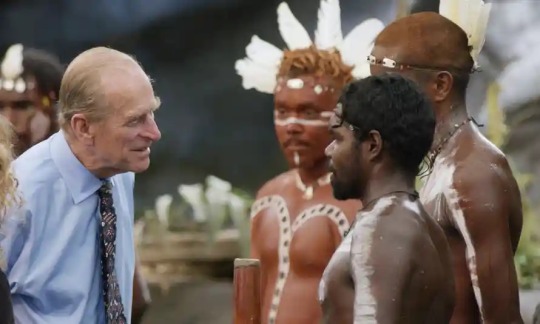
Philip quickly developed a reputation for what he once defined, to the General Dental Council, as “dentopedology – the science of opening your mouth and putting your foot in it”. Clearly he could laugh at himself as he often did as an ice breaker to put others at ease.
His remarking to the president of Nigeria, who was wearing national dress, “You look like you’re ready for bed”, or advising British students in China not to stay too long or they would end up with “slitty eyes”, is probably best written off as ill-judged humour. Telling a photographer to “just take the fucking picture” or declaring “this thing open, whatever it is”, were expressions of exasperation or weariness with which anyone might sympathise.
Above all, he was also capable of genuine if earthy wit, saying of his horse-loving daughter Princess Anne: “If it doesn’t fart or eat hay she isn’t interested.” Many people might have thought it but few dared say it. If Prince Philip’s famous gaffes provoked as much amusement as anger, it was precisely because they seem to give voice to the bewilderment and pent-up frustrations with which many people viewed the ever-changing modern world.
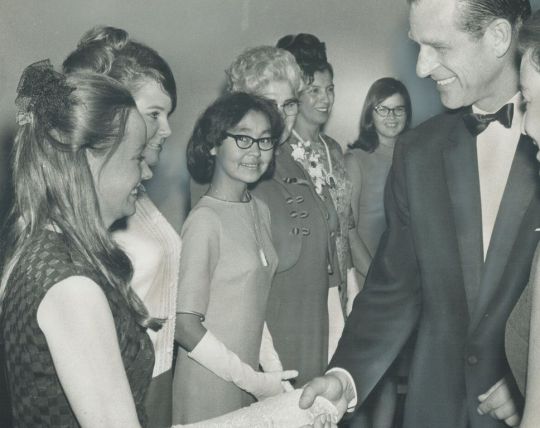
A former royal protection officer recounts how while on night duty guarding a visiting Queen and consort, he engaged in conversation with colleagues on a passing patrol. It was 2am and the officer had understood the royal couple to be staying elsewhere in the building until a window above his head was abruptly slammed open and an irate Prince Philip stuck his head out of the window to shout: “Would you fuck off!” Without another word, he then shut the window.
The Duke at least recognised from an early age that he was possessed of an abruptness that could all too easily cross the line from the refreshingly salty to crass effrontery.
One of his most perceptive biographers, Philip Eade, recounted how at the age of 21 the prince wrote a letter to a relation whose son had recently been killed in combat. He wrote: “I know you will never think much of me. I am rude and unmannerly and I say things out of turn which I realise afterwards must have hurt someone. Then I am filled with remorse and I try to put matters right.”
In the case of the royal protection officer, the Duke turned up in the room used by the police officers when off duty and said: “Terribly sorry about last night, wasn’t quite feeling myself.”
Aides have also ventured to explain away some of their employer’s more outlandish remarks - from asking Cayman islanders “You are descended from pirates aren’t you?” to enquiring of a female fashion writer if she was wearing mink knickers - as the price of his instinctive desire to prick the pomposity of his presence with a quip to put others at ease.
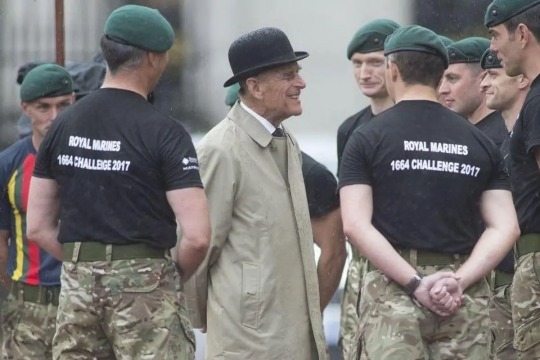
Indeed many people forget that his ‘gaffes’ were more typical of the clubbish humour of the British officer class – which of course would be less appreciated, sometimes even offensive, to other ears. It’s why he could relate so well to veterans who enjoyed his bonhomie company immensely.
But behind the irascibility, some have argued there also lay a darker nature, unpleasantly distilled in his flinty attitude to his eldest son. One anecdote tells of how, in the aftermath of the murder of the Duke’s uncle and surrogate father, Lord Mountbatten, Philip lectured his son, who was also extremely fond of his “honorary grandfather”, that he was not to succumb to self-pity. Charles left the room in tears and when his father was asked why he had spoken to his son with so little compassion, the Duke replied: “Because if there’s any crying to be done I want it to happen within this house, in front of his family, not in public. He must be toughened up, right now.”
But here I would say that Prince Philip’s intentions were almost always sincere and in no way cruel. He has always tried to protect his family - even from their own worst selves or from those outside the family ‘firm’ who may not have their best interest at heart.
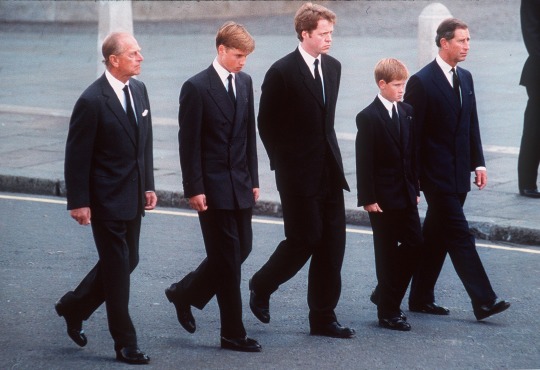
In 1937, a 16-year-old Prince Philip had walked behind his elder sister Cecile’s coffin after she was killed in a plane crash while heavily pregnant. The remains of newly-born infant found in the wreckage suggested the aircraft had perished as the pilot sought to make an emergency landing in fog as the mother entered childbirth. It was an excruciating taste of tragedy which would one day manifest itself in a very princely form of kindness that was deep down that defined Philip’s character.
When about 60 years later Prime Minister Tony Blair’s spin doctors in Downing Street tried to strong arm the Queen and the royal household over the the arrangements for the late Prince Diana’s funeral, it was Philip who stepped in front to protect his family. The Prime Minister and his media savvy spin doctors wanted the two young princes, William and Harry, to walk behind the coffin.
The infamous exchange was on the phone during a conference call between London and Balmoral, and the emotional Philip was reportedly backed by the Queen. The call was witnessed by Anji Hunter, who worked for Mr Blair. She said how surprised she was to hear Prince Philip’s emotion. ‘It’s about the boys,” he cried, “They’ve lost their mother”. Hunter thought to herself, “My God, there’s a bit of suffering going on up there”.’
Sky TV political commentator Adam Boulton (Anji Hunter’s husband) would write in his book Tony’s Ten Years: ‘The Queen relished the moment when Philip bellowed over the speakerphone from Balmoral, “Fuck off. We are talking about two boys who have just lost their mother”. Boulton goes on to say that Philip: ‘…was trying to remind everyone that human feelings were involved. No 10 were trying to help the Royals present things in the best way, but may have seemed insensitive.’

In the end the politicians almost didn’t get their way. Prince Philip stepped in to counsel his grandson, Prince William, after he had expressed a reluctance to follow his mother’s coffin after her death in Paris. Philip told the grieving child: “If you don’t walk, I think you’ll regret it later. If I walk, will you walk with me?”
It’s no wonder he was sought as a counsellor by other senior royals and especially close to his grandchildren, for whom he was a firm favourite. His relationship with Harry was said to have become strained, however, following the younger Prince’s decision to reject his royal inheritance for a life away from the public eye in America with his new American wife, Meghan Markle. For Prince Philip I am quite sure it went against all the elder Prince had lived his life by - self-sacrifice for the greater cause of royalty.
This is the key to Philip’s character and in understanding the man. The ingrained habits of a lifetime of duty and service in one form or another were never far away.
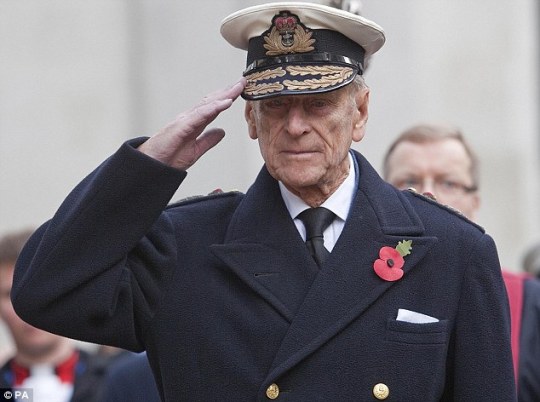
In conclusion then....
After more time passes I am sure historians will make a richer reassessment of Prince Philip’s life and legacy. Because Prince Philip was an extraordinary man who lived an extraordinary life; a life intimately connected with the sweeping changes of our turbulent 20th Century, a life of fascinating contrast and contradiction, of service and some degree of solitude. A complex, clever, eternally restless man that not even the suffocating protocols of royalty and tradition could bind him.
Although he fully accepted the limitations of public royal service, he did not see this as any reason for passive self-abnegation, but actively, if ironically, identified with his potentially undignified role. It is this bold and humorous embrace of fated restriction which many now find irksome: one is no longer supposed to mix public performance with private self-expression in quite this manner.
Yet such a mix is authentically Socratic: the proof that the doing of one’s duty can also be the way of self-fulfilment. The Duke’s sacrifice of career to romance and ceremonial office is all the more impressive for his not hiding some annoyance. The combination of his restless temperament and his deeply felt devotion to duty found fruitful expression; for instance, in the work of Saint George’s House Windsor - a centre and retreat that he created with Revd. Robin Woods - in exploring religious faith, philosophy, and contemporary issues.
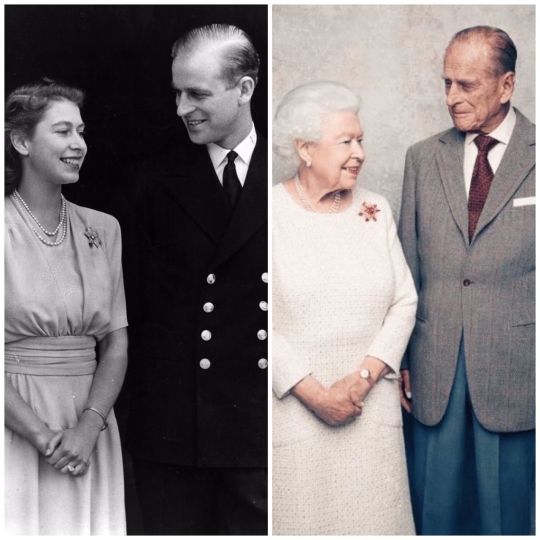
Above all he developed a way to be male that was both traditional and modern. He served one woman with chivalric devotion as his main task in life while fulfilling his public engagements in a bold and active spirit. He eventually embraced the opportunity to read and contemplate more. And yet, he remained loyal to the imperatives of his mentor Kurt Hahn in seeking to combine imagination with action and religious devotion with practical involvement.
Prince Philip took more pride in the roles he had accidentally inherited than in the personal gifts which he was never able fully to develop. He put companionship before self-realisation and acceptance of a sacred symbolic destiny before the mere influencing of events. In all these respects he implicitly rebuked our prevailing meritocracy which over-values officially accredited attainment, and our prevailing narcissism which valorises the assertion of discrete identities.
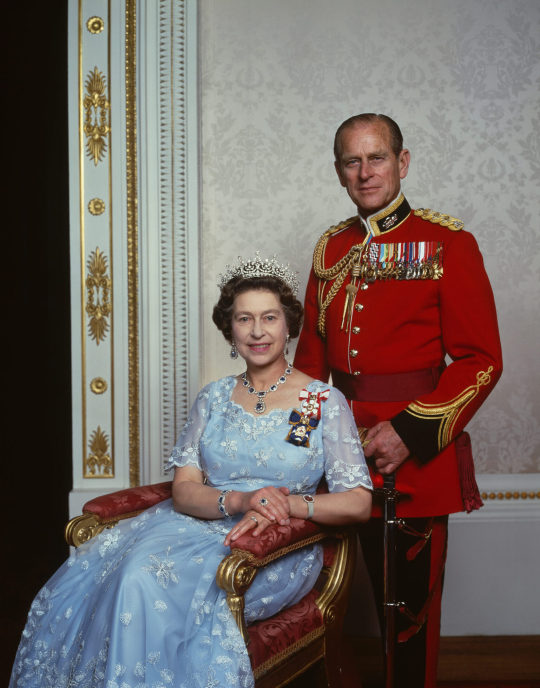
Prince Philip was Britain’s longest-serving consort. He was steadfast, duty driven, and a necessary adjunct to the continuity and stability of the Queen and the monarchy. Of all the institutions that have lost the faith of the British public in this period - the Church, Parliament, the media, the police - the Monarchy itself has surprisingly done better than most at surviving, curiously well-adapted to a period of societal change and moral anarchy. The House of Hanover and later Saxe-Coburg and Gotha (changed to Windsor), since their arrival in this country in 1714, have been noted above all for their ability to adapt. And just as they survived the Victorian age by transforming themselves into the bourgeoise, domestic ideal, so they have survived the new Elizabethan era (Harry-Meghan saga is just a passing blip like the Edward-Wallis Simpson saga of the 1930s).
There was once a time when the Royal’s German blood was a punchline for crude and xenophobic satirists. Now it is the royals who are deeply British while the country itself is increasingly cosmopolitan and globalised. British society has seen a greater demographic change than the preceding four or five thousand years combined, the second Elizabethan age has been characterised more than anything by a transformational movement of people. Prince Philip, the Greek-born, Danish-German persecuted and destitute wanderer who came to become one of the Greatest Britons of the past century, perhaps epitomised that era better than anyone else. And he got through it by making a joke of everything, and by being practical.
I hope I don’t exaggerate when I say that in our troubled times over identity, and our place and purpose in the world, we need to heed his selfless example more than ever.
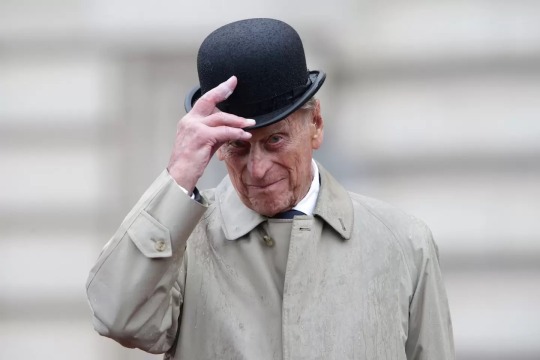
As Heraclitus wisely said, Ήθος ανθρώπω δαίμων (Character is destiny.)
RIP Prince Philip. You were my prince. God damn you, I miss you already.
Thanks for your question.
#question#ask#prince philip#duke of edinburgh#queen elizabeth II#the queen of spades#monarchy#britain#british#royalty#politics#history#culture#europe#crown#icon#great briton#society
284 notes
·
View notes
Photo
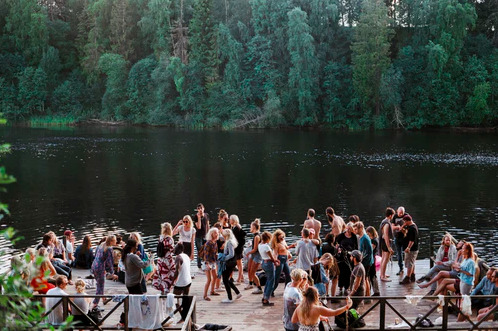

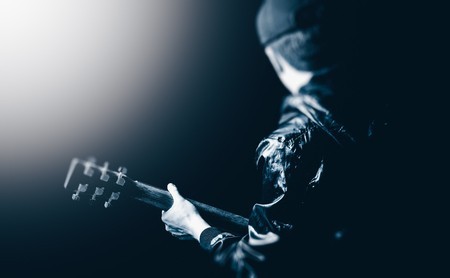


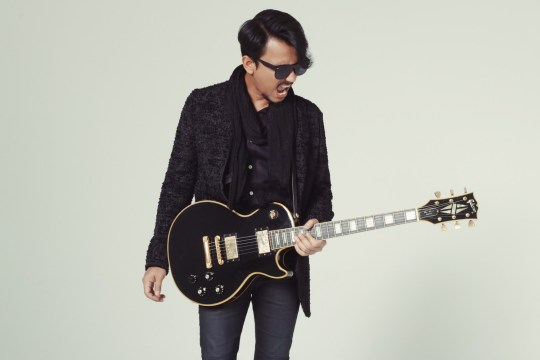
Instead of doing replies, here’s this massive hc post that nobody needed or wanted lmao ayyy
Seoul Hanoi'd
Genre: The Wikipedia page describes them as an indie rock alt-rock group, with the genres listed under the main box being indie rock, alternative rock, and some forrays into indietronica.
The group is described as genre-bending, as they will stick mainly with an indie rock vibe/folk punk (think violent femmes with that term), but they’ll pull elements from a wide range of genres. Seoul Hanoi’d is made up of singers and musicians whose wheelhouses include jazz, country/bluegrass/Americana, folk rock, indie rock, glam rock, garage rock revival, pop rock, classical, traditional Eastern, and R&B, so it isn’t unusual for a song to feature a cleverly placed jazzy bass throughout (like Ladies’ Code, Galaxy) or a mandolin.
Background: Seoul Hanoi’d was founded in 2010 when a “joke in a conversation” between American-Cambodian singer, song-writer, and musician Franny Sor Robinson and Scottish drummer Max Jin-ho Cho came to life. The group currently consists of ethnic Korean, Vietnamese, Bhutanese, Cambodian, Lao, Hmong, Malaysian, Indonesian, Mongolian, Kazakh, Chinese, Nepalese, and Thai diaspora who rotate out for live shows as their schedules permit. All members of Seoul Hanoi’d have either their own solo music careers, or are primarily involved in acting, or have a primary band they are active in. There are four founding members and eight other members, totaling twelve. In addition to the twelve official members of Seoul Hanoi’d, other guest musicians have played with them when none of the twelve in the official lineup could fill a role.
The "core” members are almost all at every performance. Of the core members, Franny is absent the most because of her wildly busy schedule. She has a hand in composing almost every original song, arranging most of the covers, writing a huge chunk of their lyrics, and is the common thread between most of the other musicians, so she is considered the leader of the group.
The band has won Grammy Awards, and since many of the band members are British they’ve won awards in Britain too, and because of the two Canadian members they’ve been nominated for awards in Canada. The band is labeled British-American-Canadian on the Wikipedia page. Though, one member is from Australia, and one from New Zealand. They joke that since Canada, the US, and UK all have at least two members, they get to be on the Wikipedia page.They have been given numerous honors from various Asian cultural organizations in The United States, United Kingdom, Ireland, Australia, France, New Zealand, and Canada.
Because of Seoul Hanoi’d’s unique structure, any touring is done in small legs and there’s usually a live lineup switcheroo from leg to leg. The band has a massive online following -- even when they don’t do live shows for a while they pump out content on their YouTube channel including covers, performances of their original content, charity livestreams, Learn [Language] with [Member], and occasional vlogs where the members teach you about their culture(s) by showing the viewer around a cultural festival or a traditional wedding or something.
Founding members: Franny Sor Robinson (Cambodian-American), Vanessa Pham (Vietnamese-American folk indie singer-songwriter and guitarist), Max Jin-ho Cho (Korean-Scottish singer-songwriter, drummer, and pianist), Mary Xiong (Hmong-American indie rock singer and musician)
Other members: Pangfoua Zangkai (Hmong-Canadian actress, singer, and guitarist), Lawrence Hardjono (Indonesian-Australian bassist, lyricist, singer), Roslan Ali (Malaysian-New Zealand glam/indie rock singer, director, musician, song-writer, and author), Souksakhone “Holly” Rasavong (Laotian-Canadian pianist/keyboardist, composer, producer, drummer), Aisulu Niyazova-Li (Kazakh-Chinese-English actress, singer, and musician), Jodie Batbayar (Mongolian-English musician, singer, violinist, activist, and producer), Andrew “Andy” Chaiyaporn (Thai-American drummer, guitarist, singer, and violinist), Hannah Sadutsang (Nepalese-Bhutanese-English musician, lyricist)
Main singer on album recordings: Franny Sor Robinson, songs v personal to the other singers are sometimes recorded by them, the main male vocalist is Roslan Ali
Main singer live: Generally Franny Robinson for Europe shows, but of the core members she’s absent most and in her absence Aisulu Niyazova-Li, Vanessa Pham, or Mary Xiong typically will take lead
Core live members: Franny Robinson (singer, main lyricist), Max Cho (drummer),Vanessa Pham (backing vocals, lead guitar), Pangfoua Zangkai (rhythm guitar, harmony lines), Roslan Ali (main male vocalist, lyricist, assorted instruments, directs most music videos), Lawrence Hardjono (bassist), Holly Rasavong (piano, keyboard), Andy Chaiyaporn (violinist, stringed instrument god)
Most common live substitutes:
Franny Robinson (singer) may be replaced with Aisulu Niyazova-Li, Vanessa Pham, or Mary Xiong
Max Cho (drummer) may be replaced with Andy Chaiyaporn who is usually in charge of string instruments or Holly Rasavong
Andy Chaiyaporn (string god) can be replaced with Jodie Batbayar
Vanessa Pham (lead guitar, backing vocals) can be replaced with Mary Xiong, Aisulu Niyazova-Li, or Jodie Batbayar
Pangfoua Zangkai (rhythm guitar, some harmonies) can be replaced with Hannah Sadutsang or Mary Xiong
Roslan Ali (male singer, various instruments) can be replaced with Andy Chaiyaporn, or Lawrence Hardjono will sing and play bass
Lawrence Hardjono (bassist) can be replaced with Mary Xiong, Aisulu Niyazova-Li, Jodie Batbayar, or Hannah Sadutsang
Holly Rasavong (piano, keyboard) can be replaced by Hannah Sadutsang, Jodie Batbayar, or Aisulu Niyazova-Li
Connections:
Franny was friends with all of the members individually before most of them knew each other, Franny is the common thread.
Vanessa Pham is an American solo artist that Franny went to NYU with
Max Jin-ho Cho is a Scottish drummer, pianist, and singer that Franny met during a song-writing session with a mutual friend who is in Max’s main band, a Scottish rock band called Glasgow Gravedigger Society
Mary Xiong is the frontwoman of an American glam rock band called Borrowing Sally’s Mascara that Franny met when they performed at the same music festival that Daniel Maitland’s main band was (an alternative female-fronted rock band called Venus and The Flytraps; he’s the other half of the bluegrass/indie country/americana duo Dara & Danny that Franny does) and Franny was there to support him, and a mutual friend introduced them to Mary
Pangfoua Zangkai is a Canadian actress that Franny met in 2008 when they were actually co-starring in an indie comedy movie directed by a mutual friend. The film was about two first-generation American women nearing the end of their final year of university, and deals with the pressure children of immigrant parents often deal with regarding their families hopes and dreams, and the feelings of not feeling American “enough” and not feeling Hmong or Cambodian “enough” through a comedic lens. The film won several awards from different organizations in the West meant to promote Asian/Southeast Asian culture and art, and has become pretty important to many people in Southeast Asian diaspora groups. Pangfoua is primarily an actress, but can sing and play guitar.
Lawrence Hardjono is an Australian singer and musician who is mostly known for his solo career primarily across Australia, New Zealand, and in his parents’ native Indonesia. Franny met him when they were both speakers at a Southeast Asian cultural event in Australia
Roslan Ali is a New Zealand rock singer, musician, and author that had been friends with Lawrence Hardjono for a while. He fronts an all Asian-New Zealander and Maori band called Kiwaisa Pacific
Holly Rasavong is a Canadian musician and producer that has produced several of Venus and The Flytraps’ albums, so she’s someone else that Franny met through her connection to Daniel Maitland.
Aisulu Niyazova-Li is one of the youngest members of Seoul Hanoi’d, at twenty-nine. She is an English actress, singer, and musician that Franny met when Aisulu reached out to Franny via her publicist about coming to speak at her (Aisulu’s) university. Aisulu was the president of the Asian Student Union at the time. Franny thought Aisulu was pretty damn great and kept in touch with her, even hooking her up with an audition for a record label. She has a solo R&B singing career under the name Niya Li.
Jodie Batbayar is an English singer, violinist, and activist most known for her violin skill. She can play classical style and fiddle style. She met Franny when the two of them were speaking at an event about Asian women’s empowerment
Andrew “Andy” Chaiyaporn is an American drummer, guitarist, singer, and violinist. He typically plays violin in an American indie folk band called Maggie Creek, named after a stream in his native Nevada. He met Franny through a Facebook group for Southeast Asian-American creatives.
Hannah Sadutsang is English musician and lyricist most famous for writing the lyrics for many popular songs in the UK. Hannah is actually the youngest and most recent official member of Seoul Hanoi’d. She’s a former student of Franny Robinson’s at Pride University.
Inspiration playlist: Link
Seoul Hanoi’d experiments with both live instruments and some elements of electronic music, but it’s always meant to accompany live instrumentation.
They have an entire album that’s explicitly political, aptly named The Political One, and a couple other songs subtly so.
Awards, iconic performances, etc:
Seoul Hanoi’d has won Grammys
Main songwriter, Franny Sor Robinson, was inducted into the Songwriters Hall of Fame in 2019 at the age of thirty-nine
Their Glastonbury 2016 performance, fronted by Franny Sor Robinson, has been heralded as one of the best live shows of the Festival in the last decade
Seoul Hanoi’d has performed at SXSW almost every year since 2013
They have been invited to perform in Cambodia, Vietnam, Laos, Thailand, Mongolia, Bhutan, Korea, Nepal, Malaysia, and Indonesia by important figures either in entertainment or government to thank them for promoting and educating about their various cultures abroad
#&&...hc#// up next imma do a post for dara & danny and for franny's work in jazz and songwriting for other singers
3 notes
·
View notes
Text
wolfstar teacher!au that I can’t get outta my head
so for the past couple of months, this wolfstar au set around the teachers at hogwarts has refused to leave me alone, so here y’all go have a list and tell me what you think. (more backstory than actual wolfstar in here!)
Welcome to Hogwarts Academy, where things aren’t currently going great for the Science department.
Minerva McGonagall runs maths. Fiercely protective of her further maths girls numbers, Minerva would personally fight anyone who so much thought of being a sexist prick in the science department. What this usually meant was she ended up fighting Severus, often.
She and Rolanda Hooch are the lesbian mums of the entire faculty.
Sirius Black, twenty-something alumnus of the Academy, teaches Art, because they’re a walking talking queer stereotype and boldly embrace it, paint-stained clothes and all.
Sprout and Grubbly-Plank teach biology. Snape teaches Chemistry. Flitwick single-handedly runs the entire Physics department, and has progressively gotten more and more frantic and upset after a stream of horrible new physics teachers, none of whom lasted more than a year.
(There was Mr. Quirrel, who was white but wore a turban because he felt it ‘reflected his spiritual being’, and none of the Muslim students liked him. After a nasty incident at the end of term involving a can of air-freshener, a bunsen burner, and a distinct lack of safety goggles, he had to… be removed for his own health, shall we say.)
(Then there was Mr. Lockhart, or, as Grubbly-Plank referred to him, ‘misogynistic idiot’; he’d written a pseudo-pop-science book once and thought he was a bit of a celebrity, he was convinced all the women on staff wanted to sleep with him, was fond of inappropriately turning on the charm on his students, and… didn’t seem to know any science, at all. After the third student showed up to Sprout’s office, trying to get out words about him being not entirely comfortable to be around in classes, she declared war on Lockhart, discovered he’d plagiarised an impressive amount of information, and marched into Dumbledore’s office demanding he be fired: ‘Dumbledore, my ten year old niece could teach physics better than he does, and on top of that, my niece isn’t creepy.’ He didn’t even last a full year.)
(The department is still reeling from Mr. Moody, who used to teach in the 70s, had a career change, and went off to fight in Iraq. He came back a war vet, and after a few years off decided he wanted to come back to teaching, but in addition to still acting like education hadn’t changed one bit, his methods were also rather… unconventional. He seemed to think he was preparing soldiers, barked orders at teenagers, and demanded ‘CONSTANT VIGILANCE!’ if they forgot the half in ‘half mv squared’. After an AS lesson about two months in that Flitwick walked in on where he was teaching projectile motion through a… very vivid question about bombing Iraqi planes, Flitwick decided he’d had enough, and the science department pitched in to patch up and teach physics between themselves for the rest of the year.)
Which brings us to now, where Flitwick and the entire science department, exhausted, have put out another vacancy.
Between themselves, they’re sort of resigned to not having a decent physics teacher yet again, as Minerva told Rolanda one night, “I told Filius, better no teacher than a shit teacher, he and I will teach physics single-handedly if we must”, and Rolanda just sighed and shook her head at her wife.
Enter Remus.
He’s young, finished his undergrad and went straight into ITT, and this is his NQT year. A physicist trained in physics teaching is a rarity, which worked in his favour, because he needed to move, and quick. (His teacher training year was rough—in between coming out to his family, he got on the bad side of a group called the Greybacks, and his year ended with a violent encounter with their lead, Fenrir, a guy a few years ahead of Remus at school, leaving him with some impressive scars, a massive uptick in anxiety, and a need to get the fuck away from Reading.) One day his alert-me-about-teacher-postings email dinged, and… Scotland. Perfect. Very hard to get further north than Scotland, unless you want to teach in the middle of the North Sea.
It’s an impressive posting, on paper. A private boarding school, based in a freaking Scottish castle, in, essentially, the middle of nowhere. It’s got its own goddamn train, for crying out loud. The posting says, Teachers are welcome to arrange their own accommodation in the nearby village of Hogsmeade, but subsidised accommodation in Hogwarts castle can also be provided. Please indicate which option you are interested in when you apply. Remus doesn’t expect to get in, not with essentially no experience, but there’s a little note at the bottom of the vacancy that says, Teachers in their NQT year are also encouraged to apply.
Truth is, after the spate of bad teachers, Dumbledore’s, shall we say, eccentric management techniques, and the general isolation of Hogwarts, no actually experienced decent teacher really wants to go there. It’s acquired a bit of its own reputation. The only people who apply are awful (see above), and the occasional young teacher.
(Flitwick, after the disastrous past few years, has resolved to give preference to ‘fresh slates’—teachers with next to no experience, who have yet to be corrupted by misplaced fame, or weird culturally appropriative spiritualist ideas, or the military, or any of that. When he sits down to look at the applications, a little bright-blue post-it note on his desk reads: 1. No celebrities! 2. Nobody violent! And in Grubbly-Plank’s handwriting, NO misogynistic idiots!!! (Yes I know it’s phys, Filius, but there have to be some))
Remus instantly makes the interview stage. Not too keen on making someone all the way south travel to Scotland, and slightly fond of the idea of a day out themselves, Flitwick and McGonagall (mostly there for intimidation, and to ensure the third bullet point is fulfilled) take a trip down to London, and meet Remus in a coffee shop.
(Yes, it’s unorthodox, but there is some benefit to being privately run; also, school’s let out and they can’t have an in-class test anyway, and they’re desperate.)
(There were only two other applicants: one was a sixty-something year old woman who talked a little too much in her application about ‘enhancing traditional values’ for Minerva’s comfort, and the other was a geographer. The competition isn’t too stiff, honestly.)
Flitwick takes to Remus quickly—Minerva raises her eyebrows, slightly concerned, at the scars down the side of his too-thin face, but he’s quiet and unassuming in a way that’s a relief after the double-horror of trying to deal with Moody and Lockhart’s, ah, expansive personalities. Also, he has a physics degree, so he can’t be a complete idiot… right? (Right. Flitwick quizzes him on misconceptions about gravity, and, after a moment, asks, “How would you go about introducing projectile motion?” Remus blinks, smiles, picks up a sugar packet, and says, “Catch.” Flitwick does, relieved, and adds, just for good measure, “Just so you know, we disapprove of using, ah, more violent metaphors or examples when teaching.” Remus frowns, perplexed, but just says, “Of course.”)
On the train back to Hogwarts, Flitwick sits cross-legged on a seat, valiantly attempting to eat a wrap that’s fallen apart in the bag, and Minerva sips at a takeaway cup of Earl Grey and declares, “Well, I like him.” Flitwick looks up from his wrap and smiles. “Yes, I rather think I do too.”
Which is how, completely shocked, Remus J. Lupin lands himself a teaching position – just on a year contract, but oh, it feels brilliant, he’s going to be teaching – and how, one week before the students arrive, he gets off the Hogwarts Express with a suitcase and a battered briefcase with R J Lupin inscribed on it, held together with a large quantity of neatly-knotted string, and a large man shakes his hand, and says, “Welcome t’ Hogwarts, Mr. Lupin. I’m Rubeus Hagrid.”
#wolfstar#harry potter#wolfstar au#teacher!au#teacher au#remus lupin#sirius black#gay remus#queer sirius black#minerva mcgonagall#minerva mcgonagall is a bamf#mcgonagall x hooch#lesbian mums#my writing#fanfic#queer fanfic#salmonwrites
531 notes
·
View notes
Note
chinhands. how would eilidh and truck get along in pirate verse tell me things.
[Ooh, this is a good question bc I have vague thoughts about it, but they’re both my muses, so it’s not something I’ve fleshed out a lot. Their mainverse relationship is a bit more developed because I initially created Eilidh to be a character in Truck’s story, and more recently they’re part of each other’s lives because of their mutual connection to Victor and All That Drama lol, but yeah in the pirate verse I haven’t gotten into it yet.
A few things would be consistent from the mainverse, though modified, especially tattoos as a point of commonality and connection (in the mainverse they meet because Truck is Going Through Shit and Eilidh gives him a tattoo to help with those feelings he’s processing). There’s some debate among historians about how tattooed pirates actually were, tattoos not being the norm for Europeans at the time and easy identification being somewhat dangerous for pirates. That’s not a debate I’m going to settle, obviously, except to say I generally headcanon most of the pirates as having few tattoos, and those they do have being specific and deliberate, probably not a casual “it looks cool” thing except where there’s “I want to look scary as shit, ink me up” characterization going on.
There *is* a history of tattooing in Scotland, though, particularly taking the long view of Scottish history, and I am 100% keeping Eilidh’s first tattoo--the thistle--because of that. [insert a digression about anti-Scottish sentiment and its connection to Eilidh’s anti-authoritarian streak and ALSO her interest in ancient art just...a long digression I am sparing you because it’s really a tangent to a tangent in answering this question (also her time within but as an outsider in upper class circles in London that eventually led to her becoming a pirate which is ALSO a tangent)]
ANYWAy, because of the time and place she grew up, pirate!Eilidh is not a tattoo artist and does not have as many tattoos and mainverse!Eilidh. BUT she does have an intense curiosity about them and has learned some techniques in her travels. (Curiosity about people & art and a desire to learn and master things being a constant with her.) She can tattoo with some basic techniques, and she probably does it for fun or for drinks when she’s in Nassau. And she has some tattoos but, in a significant contrast to the mainverse, she did not do most of them herself. In fact, there’s a possibility that Truck has done a few for her, or possibly some scarification (or both).
To expand on that, Truck and Eilidh are both biracial (Truck is black/Nanticoke and Eilidh is black/Choctaw) and both are therefore connected to cultures beyond being American(ish. Colonial. Whatever) and Scottish for whom body modification was, at the time, a more common practice than among Europeans. Those connections, though, have been complicated or even severed by imperialist violence. Being pirates gives them some freedom to travel and access to others in similar positions, with cultural identities similarly disrupted by imperialism, and so I think that tattoos/scarification would be a point of similarity and connection for the two of them, in particular the pursuit of greater understanding of and connection to them as stolen pieces of their own identities.
In the mainverse, Truck has a lot of tattoos, but in this verse he’d have more scarification as he’s sought out more African artists and traditions. He’s older than Eilidh and has been at sea longer, so he’s traveled more and learned more about various kinds of body art. That means he’s someone she's learning from in some ways while also teaching him. In the mainverse, tattooing is something she does for him, and it sparks their friendship, but in this verse it really is the foundation of their connection to one another. It’s a nexus of their commonalities and a way of expressing things that are otherwise difficult to articulate. (Because Eilidh doesn’t like trying to put things into words in general, and Truck doesn’t like talking about *himself*)
Also, less metaphysically, mainverse!Eilidh would definitely be down to sleep with Truck, but I don’t think they ever will. It’s just a casual “yeah if he was interested that would be fun.” In the pirateverse... it’s more likely. They’d never be romantically involved, but they’d probably sleep together once in a while. Also Eilidh definitely knows all about Truck’s relationship with Molly in this verse and has probably walked in on them in all kinds of, um... positions and states of undress, and she's cool with it. She likes them both and she likes seeing her friends enjoy themselves. The three of them have definitely ended up in bed together, but as for what they did there... idk. Let Nassau gossip :-p
Much as in the mainverse, Eilidh thinks Truck is too nice for his own good and probably looks at his ...friendship(???) with Flint as a mistake, but at least he doesn’t like... actively ENABLE Flint like Gates does (wtf, Hal? Why do you help that human disaster?), so she basically looks at it like... Truck’s a weirdo who keeps a dangerous pet. It’s an eccentricity that Eilidh thinks will end up biting him in the arse, but whatever, it’s his arse, he can make his own decisions.
What else? Eilidh has probably invited Truck to join her crew, but he hasn’t taken her up on that, and I’m not entirely sure why. Maybe he’s had other ships that he’s been especially tied to for whatever reason, or the timing just hasn’t been right, idk. But they’re always glad to see each other when their paths cross. There are no hard feelings about him turning her down, I think because she feels a spiritual connection to her ship and understands that Truck needs it to feel *right* to change crews like that.
I also think he maybe gravitates more toward larger ships for a variety of reasons, and if she was going after the right kind of prize, he might come along for the ride. Maybe.]
#[oh hey did you want 1k of me ramblingly negotiating btw historical considerations and characterization? WELL HERE YOU GO]#eilidh and truck#v: if you had fought like a man you needn't be hanged like a dog#intolerablexsacrifice
1 note
·
View note
Text
Why Learn a new language and how i am learning!
Salut!/ Oye!/ Dia dhuit!/ Salaam ‘alaykum/ Salam!/ Bonjourno!/ Priyvet!/ Hello! <3
Now being a Linguistic anthropology major you can tell right away that i love to learn new languages, but when i tell people how many languages i am learning i get questions like “How do you keep them straight in your head?” “Why do you need to know so many languages?” and my favorite “You are a blonde, white girl, why do you want to learn Persian and Arabic?” well, my friend, ill tell you why!!!!
Being an American, you can verify that there are only two languages that most people speak, being English, and Spanish. America has a long history of being a melting pot of different culture and languages, some of which stay alive in the family of those former immigrants that wanted to find a new and better life for their family due to the growing opportunities and the famous “American Dream” complex arising. However, there’s a lot of dark history in these Immigrants stories; due to the pushing of assimilation as well as American nationalism of the time, and still happening in modern day, some families lost their culture and diverse language to fully become an English speaking, Anglocentric American. For instance, my family are descendants of Irish, Scottish, German and English immigrants (everyone in America, except Native Americans, are descendants of immigrants) and yes, we speak English, being that it is the official language of the USA, but that’s as far as I am connected to my English history; you don’t see me whipping up English tea and blood pudding for breakfast. As far as my German side, we celebrate Christmas with a Christmas tree just like everyone else; but HEYYYYYYYY bonus fact, the tradition of the Christmas tree was started in Germany ---> (https://www.history.com/topics/christmas/history-of-christmas-trees). But as far as connection to my heritage, when you look at me you can pick out what I am based on my features and that is pretty much it.
Now how does America compare to the rest of the world based on Language education? Well simply, America is very America centric with most of its citizens only speaking English fluently, and some can speak at a beginner to intermediate level of another language, most popular being French and Spanish because those are provided in the public-school system. As for Europe and Africa, most of my European/African friends speak many language; for example, my French buddy can obviously speak French, and English, I also have English speaking, as well as regional native speaking, friends that are Persian, Italian, Ivorian (Cote d’ivore), Egyptian, Swedish, German, Irish (yes, Irish people have their own language), Welsh (yes, they do as well), Romanian, and Russian. All of them speak their native language, as well as English, but also speak other languages on top of that! For instance, my Ivorian friend speaks English and French as well as many native tribal languages. So why is America so unilingual while a lot of the world is polylingual? I believe it’s geography. Going back to my Ivorian friend, she comes from Cote d’ivore where their Official language is French, but the common people still hold on to their tribal roots and have continued the native tribal languages, so when she goes to the market she needs to know these languages so that she can communicate with individuals that speak another tribal language, as well as for English, she moved to America when we were in high school, so for her to communicate she learned English. In America, our neighbors to the north speak majority English, so in North America unless you are going to Mexico or Quebec, Canada, there is no real need to learn a different language; even if you do go to Quebec or Mexico you don’t need to know the respective languages because chances are there will be English speakers in these areas, or at least understand enough to help you. So, Why learn a new language even if you are not traveling to a different country, or even thinking about traveling to a different country? My answer is quite simple; Understanding. In America everyone can pretty much agree that the news platforms are biased towards the news that they think either will or won’t boost their views and rating. Which is a smart strategy when you’re just looking at the success of the news group, but when it comes to understanding different cultures an ocean’s away from our own, it can create prejudices, and stereotypes. Why I chose to learn new languages, I did it to understand more about the Iranian Nuclear conflict, as well as the Israel/Palestine conflict; I’m a huge history and politics buff if you couldn’t tell. So, since I was only getting the American side of what I was learning, I decided if I truly wanted to see both sides I would have to understand the language of the other side of the argument, because I was always taught, history is written by Victor. So, I took to the internet to find a way to learn languages, and found websites books and apps, while they are great for practicing and learning the written language, but they don’t help you KNOW the language in the sense of being able to speak to a native speaker. So, I went to find Pen pals, what is a pen pal? They are people just like you from all over the world that wish to see what life is like for citizens of different parts of the world from their own, also they are perfect for language exchange. I came across this great website called interpals.net and set my status as “Trying to learn Persian, would someone like to help?” and I got a message not too long after saying [Hello, my name is {Persian friend} and I am from Tehran and now live in Azerbaijan for university. I saw you wanted to learn Persian, I would be honored to be your Persian friend.” That was my first pen pal and now we have been talking for almost 2 years. We talk about visiting each other and truly seeing what our respective countries look like. But I learned how to say Salam Sobh bekheir, chetori chakhabar? (Hello good morning, how are you?) sorry if the spelling is wrong I speak it not write it xD.
But since learning these languages I have found out what they see as important in their society, for example in Arabic there are manyyyyyyyyyyyyyy words for the word “love,” as well as the history of the nation because language is an adaptive thing, it changes from nation to nation and you can see where the people came from based on language families, as well as seeing the history of the conquered nations based on the official languages of the country, for example in Ukraine they speak Russian but they also speak Ukrainian, which is another Slavic language, this shows that not only did Ukrainians and Russian hailed from similar ancestors, but at one point Russian had political power over Ukraine.
So, now the question you all been asking (maybe…). How do you even learn a language? I don’t want to pay 100s of dollars to sit in a classroom confused? Well you don’t have to! Go online or travel and find a friend that speaks the language you wish to learn! That’s how I learned! Get them to teach you as many phrases as you think you can handle a day by just throwing them into conversation and provide a translation, from there you can try and throw those words into similar context in your part of the conversation. I also find it really helps to learn how the language is spoken as well as accents of the language by watching foreign movies, television shows and by listening to music from a different country. But the one thing that is the biggest help in practice is language apps, like Duolingo, which I use. Duolingo uses pictures, sentence translations, matching and speaking exercises to help you study, and the app does talk to you if you are an auditory language learner like myself!
Language learning is practice but if you want to connect with another culture through their language, the work is well worth it!
“if you talk to a man in his second language, you’re talking to his brain, if you talk to him in his mother language you're talking to his heart.” --Nelson Mandela
#language#understanding#language learning#europe#africa#america#english#french#farsi#arabic#lingustics#irish#welsh#learning#friends#pen pal
2 notes
·
View notes
Note
Malec was at 45% when I voted. May I ask for some malec and Madzie cuteness? :)
“Are you sure this is a good idea?”
“It’s only a week, Alec.”
“I know, but think of what could happen.”
“This was literally your idea,” Magnus pointed out, and Alec groaned. It wasn’t as if he didn’t know that. He remembered damn well his brilliant idea that they should send their daughter away for a little bit of education and broadening of horizons. He just hadn’t realised how hard it was going to be.
It was late at night in the middle of a remote manor in the middle of the Scottish Highlands. It was so remote, in fact, that Alec struggled to resolve the fact that mundanes had built this. All the way out here. But rather than being full of mundanes now, it was acting as a warlock school for the week. Almost like a summer camp. Magnus had mentioned it idly, since the school had requested he drop by and take a class. It had been Alec’s idea to send Madzie.
After all, it wasn’t so different to Shadowhunter traditions. Most young Shadowhunters would take a posting at another Institute, to learn the culture and benefit from the experience of people elsewhere in the world. Max had been in Mumbai not so long ago. Alec had never gone - he’d always wondered why he, Jace and Izzy were never allowed to leave New York, why no one else their age ever really visited.
The fact that his parents were ex-Circle members probably had something to do with that.
Madzie was upstairs dropping her things off in her dorm for the week, and her Dads were waiting to say goodbye. When Madzie had fallen into their laps they’d been so new to each other Alec had never considered having kids. He liked children, of course. But being a parent was different. Madzie had needed a home, though, and Alec had been unable to say no.
Seven years later, he wasn’t really sorry for that choice. It was one of the best things he’d ever done.
“She’ll be perfectly safe,” Magnus assured him softly, squeezing his hand. “She’s a quick learner, and she’s strong. She needs this. You were right about that.”
Alec sighed deeply, nodding. Magnus was right. Of course he was right. Madzie had flourished into a wonderful young girl, who was hungry for more than he could teach her. No doubt Magnus had a lot to teach her too, but she deserved to have some time with warlocks her own age, to learn from as many people as possible. She deserved this. He just needed to stop worrying.
At that moment Madzie came bouncing down the stairs, curls flying and a beam on her face. “This place is amazing,” she gushed happily, bouncing on her feet. “One of our teachers has wings.”
“You gonna be okay on your own for a bit, Sweet Pea?” Magnus asked, and Madzie nodded eagerly.
“Of course I am, Papa. Besides you’re visiting soon anyway.” She tugged on her parents’ sleeves, leaning in conspiratorially. “One of the other girls said you’re really cool. I told her my last name and she nearly fainted.”
Alec smiled. Madzie Lightwood-Bane. Something he never got tired of hearing. His mother had nearly fainted when he said he wanted to give a Downworlder the Lightwood name but… well, she could shove it as far as he was concerned.
“Your Dad and I need to get back to work, but we’ll see you soon darling, okay?” Magnus promised her, and Madzie nodded, reaching up and wrapping her arms around Magnus’ shoulders.
“I love you.”
“Love you too,” she replied instantly, and Alec smiled. Before he could have a moment to capture the scene, though, Madzie and moved, throwing herself towards him.
“Love you too, Dad.”
Alec smiled, heart warm.
“Yeah, me too. Don’t cause too much trouble, yeah? You don’t need to listen to your Uncle Jace about everything.” Madzie giggled, nodding. Alec wasn’t entirely sure how much it worked.
Hearing her name being called across the foyer, Madzie gave them each one last hug before bouncing off. Alec sighed, and Magnus laughed, wrapping his arms around Alec’s waist.
“Just take me home so I can worry in peace,” Alec begged softly, and Magnus smiled, pressing a kiss to Alec’s cheek.
“Your wish is my command,” Magnus replied, and Alec rolled his eyes.
“So you’re my genie now, are you?”
“I could be. I’m bound to do whatever you tell me, just the same.”
Alec snorted.
“No, you’re not.”
“I am!”
“Hey, tell that to the guy that refused to take his daughter on a Mud Run.”
“Now that’s just unsafe and unhygienic.”
Alec grinned, leaning in to kiss Magnus properly.
“Let’s go,” Alec suggested, watching as Magnus opened a portal, taking one last look around the place.
For someone who’d thought he could never have a real relationship… he’d done not badly. Madzie would have fun here. And maybe he could have some fun of his own in the empty apartment…
Alec grinned, and stepped forward.
#ficsformalecvotes#shadowhunters#malec#magnus bane#alec lightwood#madzie#i also got an anon for kidfic + the kids going away#so this is gonna count for both!#i was not at all inspired by hogwarts#what are you crazy#anyway malec are good dads#i'm so proud of them#thank you for prompting!#myfic#dark-alice-lilith
74 notes
·
View notes
Text
What Takes Place When Male Do Not Comply With Masculine Clothing Norms at Work?
Every early morning, men make a seemingly mundane yet crucial choice: what to use to work. The majority of pull out some variation of the charcoal, navy, or black match from their closet. Some may add their own twist: a polka-dot pocket square or vibrant socks. This probably isn't unexpected. In Britain and North America, the fit is the most culturally accepted kind of workplace wear for males. What do we make of the males who turn down the solid-color match and choose for, state, an embellished jacket and sequined leggings? This concern is not as minor as it may appear. I have discovered that the method we answer it has crucial ramifications for how men feel at work, and likewise influences organizational cultures in ways most supervisors may not think about. Fifty males in between the ages of 22 and 78, all working and residing in and around Toronto, Canada, welcomed me into their homes and gave me a tour of their wardrobes. While some of these men grabbed a navy fit and white button-down shirt for work, lots of did not-- making clothing choices that defied manly appearance standards when dressing for their jobs. It's more common in the arts and style markets, however men likewise pick to dress fabulously in expert companies. Unless you work at a style magazine or a cabaret club, these codes mostly adhere to dominant gender standards that aren't especially welcoming to guys who wear womanly styles. Fabulous males police their clothes to prevent "masculinity predicaments" at work: circumstances where their behaviors and appearances are in contrast to the dominant concepts about what it implies to be a guy. Their stories highlight both how guys make clothes options for work and their everyday experiences of using attires that challenge masculine standards. These guys represent the variety of demographics, professions, and clothes styles in my sample. Mark. The closet in Mark's bed room offers a glance into his three-decade profession in financing. The 50-year-old has been collecting matches, bow ties, and scarves in yellow, orange, pink, and other rainbow shades because he started working for the bank in the 1980s. Mark's privilege as a white man or as a seasoned professional does not protect him from routine jabs and jeers at work. Reviewing these all-too-frequent encounters, he keeps in mind one time when he wore a sparking yellow satin bow tie. His manager passed him in the hallway and jokingly asked, "Do you have some sort of audition?" Mark remembers being shocked at the remark because he "had on a blue sports jacket, gray trousers, and a white t-shirt. This yellow bow tie. It resembled, 'You're strange.'" Although Mark has seen more straight men as his bank "rocking color" over the previous decade, it is typically limited to socks and neckties. His vibrant clothing continue to "make individuals uneasy" because he is "stepping beyond the border of the blue fit, blue tie, white shirt." To avoid being the target of jokes and stares, he'll frequently tone down his workwear. Drawing on his self-described "gender-more" visual when putting together attires, the black 30-year-old blends traditional men and women's clothes pieces into a single look. He will layer a women's sequined top under a men's leather jacket, for example, or a basketball jersey with maroon faux-fur pants. Nigel's usage of clothing as self-discovery and education has actually not constantly been met fanfare from his principal. Pulling out a set of fluorescent pink tights from his closet, he remembers pairing them with a sequined halter leading one morning for work. His instinct was that "this is not expert," therefore he used a sports jacket on the top because "sports jackets change whatever." His principal, nevertheless, pulled him aside at school because she thought the clothing was "unprofessional" for the classroom. While Nigel describes that his principal was "actually sensitive" in how she handled the discussion, it nonetheless triggered him to give his work attire a double take-- "I've got to examine what I wear." Richard. Forty-seven-year-old Richard shares a closet with his better half, however his clothes take up 2 of their three shelves. The physician of Scottish heritage has a fondness for blending strong prints and patterns, and also takes pleasure in wearing fitted shapes. He will tone down his outfits based on whom he is meeting that day. When Richard is invited to offer a talk to other doctors, he "intentionally wears a coat that is less fitted and looks more traditional" because he does not desire his design to interfere with the credibility of his presentation. His fellow physicians are "mainly an older generation," and Richard thinks they hold more standard views about guys's clothing designs. Although blazers are common men's attire, dynamic prints and body-conscious cuts are not. Richard's care over whether to interfere with masculine dress codes originates from his colleagues' reactions to his clothing. When Richard wore a sports jacket, t-shirt, and incorporate varying tones of red to a personnel meeting, a male coworker said: "I want I could pull of using that sort of clothes." Even though Richard dismisses the experience as "a pretty small thing," he still remembers that "I wasn't wearing stiletto heels or something, however a comment was made about it," which he viewed as "a push on my expression"-- causing him to rethink his clothing options for work. Harry. It has actually been 5 years considering that 53-year-old Harry finished his gender confirmation surgery. The Caucasian professor's everyday wardrobe includes lively nail polish, sequined accessories, and shirts with homemade queer graphics. He designs these womanly pieces along with more masculine ones, such as tennis shoes, dark denim, and navy blazers. Through these wardrobe balancing acts, Harry describes that he has the ability to "wear a way which allows room for me to fine-tune that identity, which can come through me being perfectly assembled in the match, but then still tell some that I'm trans." Harry's balancing acts sway towards fabulousness when he is fulfilling or teaching with students. However, his outfits edge toward more masculine dress standards for essential work occasions. When Harry was shortlisted for a leadership position, he chose to use a white dress shirt and gray company fit, sans fun nails or accessories, due to the fact that he desired to resist transphobia and fit into the employing committee's assumptions about "who is a leader, who is accountable, what that kind of individual appears like." According to Harry, "suits are an expression of procedure and a kind of severity that fits into conventional systems of what's serious and who is major."
0 notes
Link
Remembering the revolutionary sound that helped popularize Transcendental Meditation
The Beatles and Maharishi Mahesh Yogi
In October 1966, 18-year-old Prudence Farrow Bruns was kneeling at the foot of the Apparition Grotto in Lourdes, France, praying for a miracle. She desperately wanted to study Transcendental Meditation (TM) with her guru Maharishi Mahesh Yogi in Rishikesh, India, but students at his TM teacher training were required to be at least 24 years old. When her older sister, actress Mia Farrow, was invited to the Maharishi’s ashram a year later, the younger Farrow was desperate to join her. “It was my dream!” she recalls.
As fate would have it, Prudence got her miracle, and in January 1968, she traveled with her sister Mia to the small Himalayan town where her guru made camp when he was not traveling around the United States and Europe lecturing about elevated consciousness and the joys of inner happiness. There were more than 60 people staying at his ashram at the time, including the Beatles, Scottish pop star Donovan, and the Beach Boys’ Mike Love—all seeking enlightenment from a shaggy-haired pacifist whose battle cry was that with just 20 minutes of TM a day, practitioners could achieve “pure bliss consciousness” and live from a place of love rather than in the prison of their minds.
But it wasn’t all peace and love at the compound. The Beatles famously left after two months amid rumors of sexual misconduct by the Maharishi (no suits were ever filed and some of the attendees later denied that anything inappropriate had taken place) but not before they penned 48 songs, including the White Album’s “Dear Prudence,” a nod to the young Farrow’s reclusive dedication to her meditation practice while at the ashram.
See also #TimesUp: Ending Sexual Abuse in the Yoga Community
Even without the endorsement of his star pupils, the Maharishi and the TM movement were catching fire in the West. TM was a welcome contrast against the backdrop of the turbulent 1960s. The Vietnam War was taking hundreds of lives per week. A spate of high-profile assassinations and violent protests rocked the evening news, and the specter of war with the Soviet Union and nuclear annihilation frightened the nation as the world watched. Mantra meditation and the Maharishi’s message of love and world peace became the it theme in popular culture. Life magazine dubbed 1968 “The Year of the Guru,” featuring the Maharishi and his famous disciples in a colorful eight-page spread. By the mid-1970s, TM had an estimated 600,000 practitioners and was gaining up to 40,000 more per month.
“One of the things that the Maharishi started having us do was meditating in these large groups to put peace out into the collective consciousness,” says Farrow, who at 72 has only recently retired from teaching TM after more than 51 years. “From my perspective, today’s yoga practitioners are my children and grandchildren and great-grandchildren. You’re the future of this revolution in consciousness in the West. It started with us, but you will carry it on.”
In the famed words of American psychologist and writer Timothy Leary, “Turn on, tune in, drop out” as we travel back to the 20th-century music and counterculture that spawned a quest for self-inquiry and brought Eastern spiritual practices West—setting the stage for the contemporary New Age movement we have today.
See also The Timeline and History of Yoga in America
PLAYLIST
From Ravi Shankar to the Beatles and beyond, we've collected the songs that inspired a spiritual revolution.
MUSIC + TM TIMELINE
Classical violinist Yehudi Menuhin
JANUARY 1952
Classical violinist Yehudi Menuhin tours India
American-born Yehudi Menuhin, considered one of the greatest violinists of the 20th century, was invited by the Indian government to play a series of concerts. There, he was introduced to celebrated sitar player Ravi Shankar and guru B.K.S. Iyengar by then-Prime Minister Jawaharlal Nehru. Menuhin became a champion of Indian classical music, recording the Grammy Award-winning album West Meets East with Shankar and performing with Hindustani classical musician Ali Akbar Khan. He became a lifelong yoga practitioner, even inviting Iyengar to join him on a European tour in 1954 so he could learn directly from the master. The two would remain friends until Menuhin’s death in 1999, and Menuhin eventually wrote the foreword for Iyengar’s bestselling book Light on Yoga, which is still in print today and has sold more than 3 million copies worldwide.
Classical sarod player Ali Akbar Khan
APRIL 1955
Indian Classical Music Hits America
Classical sarod player Ali Akbar Khan traveled to America for the first time for a series of concerts for the Living Arts of India Festival at MoMA in New York. One of the concert recordings became Music of India: Morning and Evening Ragas—the first Indian classical recording released in the United States. (Akbar Khan also became the first Indian musician to appear on US television that same year.) The concert received rave reviews from the New Yorker and the New York Times. Its success set the stage for Ravi Shankar’s first US tour, on which he played to small but intrigued audiences. Shankar would eventually connect with producer Richard Bock of World Pacific Records and release 12 albums over the next decade.
See also 5 Spiritual Musicians to Follow
Maharishi Mahesh Yogi
1959
The Maharishi Begins His First World Tour
Maharishi Mahesh Yogi, known as the “The Giggling Guru” due to his penchant for spontaneous laughter, visited the US, Europe, and Asia to teach Westerners about Transcendental Meditation, a type of mantra meditation he learned from his guru Swami Brahmananda Saraswati. Calling 1959 “The Year of Global Awakening,” Maharishi gave lectures on his technique in community centers, private homes, and churches, catching the interest of Hollywood A-listers such as Shirley MacLaine and Clint Eastwood and socialites like tobacco heiress and philanthropist Doris Duke, who called TM “life-changing.” Maharishi completed 13 world tours by 1971.
The Beatles
1965–1966
The Beatles get spiritual
By the mid-’60s the Beatles had begun experimenting with psychedelics and integrating their experiences into their music. George Harrison described dropping acid for the first time in 1965 and experiencing visions of yogis in the Himalayas in Martin Scorsese’s 2011 documentary George Harrison: Living in the Material World. “I’d never thought about them for the rest of my life, but suddenly [they were] in the back of my consciousness,” Harrison said. In 1965, the group was also introduced to Shankar’s music while hanging out with David Crosby of the Byrds (and later Crosby, Stills & Nash) in Los Angeles. Harrison met Shankar a year later while touring England and began taking sitar lessons from him. Shankar simultaneously nurtured Harrison’s interest in Hindu tradition and spirituality. “Ravi and the sitar were kind of like an excuse trying to find this spiritual connection,” Harrison said in an interview with the BBC World Service radio network. Harrison and his then-wife, model Pattie Boyd, visited Shankar in India in 1966. Taking an interest in Harrison’s spiritual journey, Shankar and his brother Rajendra gave him certain books, including Parahamsa Yogananda’s Autobiography of a Yogi, which Shankar claimed in a 2008 interview “was where [Harrison’s] interest in Vedic culture and Indian-ness began.”
See also The Effortless, Calming Magic of Mantra and Music, According to Science
The Beatles meet the Maharishi
1967
The Beatles meet the Maharishi
Harrison and the rest of the Beatles traded LSD and other mind-altering substances for meditation. Pattie Boyd discovered TM in a newspaper ad, and the rest is history. When the Maharishi visited London later that year to give a lecture at the Hilton hotel, Harrison, John Lennon, Paul McCartney, and their wives attended. The group was so entranced that they dropped everything to leave the following day for a 10-day spiritual conference led by the Maharishi in Bangor, Wales to learn TM for themselves. In a press conference, they famously swore off drugs.
Rishikesh, India
February 1968
The Beatles travel to the Maharishi’s Ashram in India
Together with their wives, the Beatles headed to Rishikesh, India to study TM with a slew of other celebrities, including Hollywood film stars and pop and folk musicians. Rishikesh had earned the moniker “the Birthplace of Yoga” thanks to its hundreds of ashrams and temples and the flocks of seekers who sought to learn meditation and yoga at its source and bathe in the holy Ganges River that flows through the city. The Maharishi’s ashram, built with funds donated by American heiress Doris Duke, was built on a cliff above the Ganges, surrounded by jungle. Despite the Maharishi’s recommendations to meditate for at least eight hours each day, music was everywhere at the ashram. Without other outside distractions, the Beatles were even more productive than usual, reportedly writing dozens of songs during their time in India, most of which appeared on the White Album.
See also The Science Behind Finding Your Mantra and How to Practice It Daily
The Beatles
November 22, 1968
The Beatles’ White Album is Released
The second track on the seminal double album, “Dear Prudence,” had been written at the Maharishi’s ashram and paid homage to Farrow’s day-and-night devotion to her meditation practice. In a 1980 interview, John Lennon recounted the story behind the song: “[Prudence] had been locked in for three weeks and was trying to reach God quicker than anybody else.” Farrow recalls that Lennon recognized her singular dedication to expanding consciousness: “I was like George, dedicating my life to this thing that most people couldn’t even feel or know existed, she says. “There’s a certain purity to that. It’s a beautiful song. For me, it’s the only song [on the White Album] that truly captures the flavor of Rishikesh, India.”
George Harrison in India
August 1969
Harrison’s Version of the Hare Krishna Mantra charts in the UK
After experiencing kirtan in India in 1966 while visiting the city of Vrindavan with Shankar, Harrison fell in love with chanting, in particular the Hare Krishna Mantra, which he later credited with protecting him when his plane was struck by lightning during an electrical storm on the way to New York to organize the 1971 Concert for Bangladesh. Harrison met Hare Krishna Shyamasundar Das by chance at Apple Records in February 1968, and the pair became friends. Harrison was compelled to help the Society for Krishna Consciousness set up a temple and establish an organization in London. The two collaborated on 1971’s The Radha Krsna Temple album, of which “The Hare Krishna Mantra” was a hit 1969 single. For the track, Harrison joined in kirtan and played harmonium with devotees—the Sanskrit chant ultimately peaked at number 12 on the UK charts, introducing scores of Beatles fans to this revered mantra.
See also The Harmonium for Beginners
1970
The Beatles break up
After a final recording session for Abbey Road in August 1969, the Beatles quietly went their separate ways, although news of the split wasn’t publicized until McCartney announced it in a press release promoting his first solo album, McCartney. In the early ’70s, Harrison embarked on a solo career that showcased his spirituality and mysticism, beginning with his triple album All Things Must Pass, which featured the hit single “My Sweet Lord” (and included the Hare Krishna Mantra). The album topped the US Billboard 200 Chart for seven weeks, ultimately selling more than 1 million copies.
Ravi Shankar
August 1, 1971
Concert for Bangladesh
Harrison and Shankar led two concerts at New York City’s Madison Square Garden to raise money for refugees following the Bangladesh Liberation War, which caused massive civilian casualties. Other headliners for the concert included Ringo Starr, Bob Dylan, Eric Clapton, Billy Preston, and Ali Akbar Khan. The concert, a subsequent live triple album, and a film ultimately raised $12 million, and the recording earned a Grammy for Album of the Year. Bob Geldof would later credit the Concert for Bangladesh as his inspiration for Live Aid, which raised $127 million for African famine relief in 1984.
See also A Beginner's Guide to Meditation
Anoushka Menon
October 20, 1998
Ravi Shankar’s daughter, Anoushka, releases her first album
After beginning to perform sitar with her father in her early teens, Anoushka Shankar (page 104) released her first album, Anoushka, at age 17, continuing her dad’s legacy of popularizing Indian classical music in the West. Recalling her father’s devotion to music, Anoushka Shankar says, “I grew up with someone who was deeply, deeply immersed in Indian music and in Hindu philosophy . . . he was a person who went deeply into one truth. He used to tell a story about what his guru said: ‘If you learn one thing, you’ll learn everything. And if you learn everything, you might not learn anything.’ That’s the thing about my dad, he was curious about the world. But, he was deeply focused and rooted in something—there was a real dedication to the practice of music as something spiritual.”
George Harrison
November 29, 2001
George Harrison dies
After a five-year battle with throat, lung, and brain cancer, Harrison passed away at age 58. In accordance with his wishes, his ashes were scattered at the convergence of the three holiest rivers in the Hindu tradition: the Ganges, Yamuna, and Saraswati.
See also Understanding the Mind-Body Connection
Royal Albert Hall
November 29, 2002
The Concert for George is held at the Royal Albert Hall in London
Harrison’s son, Dhani Harrison, and Anoushka Shankar performed on sitar. Other featured artists included Paul McCartney, Ringo Starr, Eric Clapton, Tom Petty and the Heartbreakers, and all of the surviving members of Monty Python (Harrison was a producer on the comedy troupe’s 1979 film The Life of Brian, among others).
David Lynch
2005
The David Lynch Foundation is formed
Started by American film director David Lynch, a TM practitioner since 1973, the foundation teaches TM to both children and adults and has provided scholarships to nearly 150,000 schoolchildren in the United States and South America. With a goal of raising $7 billion to spread TM, the foundation has hosted more than a dozen star-studded events featuring performances from devotees such as Paul McCartney, Ringo Starr, Katy Perry, Sting, Eddie Vedder, Sheryl Crow, Jerry Seinfeld, and Moby.
See also Mantra Meditation
Ravi Shankar
2020
Centennial of Ravi Shankar Kicks off
To honor the legend’s 100th birthday (April 7), a series of concerts featuring Shankar’s daughters Anoushka Shankar and Norah Jones, Dhani Harrison, classical composer Philip Glass, and many of Shankar’s disciples will be held in London, New York City, San Diego, Los Angeles, Chicago, and New Delhi. (At press time, no cancellations had been reported.)
GURU INFLUENCERS
From Viniyoga creator, Tirumalai Krishnamacharya, to the founder of the International Society of Krishna Consciousness, Swami Prabhupada, it seems like there was a gold rush of gurus from India to the West in the 20th century. Some of these Hindu monks were more influential than others, though, thanks to celebrity support and unprecedented media publicity—even though many, including some of those mentioned below, later faced allegations of sexual abuse.
It started with Swami Vivikenanda, the man credited with bringing yoga to the West. Born in Calcutta in 1863, he laid the groundwork for Eastern spirituality in the United States when he traveled to Chicago in 1893 to introduce Hinduism to the Parliament of World’s Religions. After he founded the Vedanta Society in New York in 1894, thought leaders and celebrities such as philosopher and psychologist William James, actress Sarah Bernhardt, and inventor Nikola Tesla became fans. These centers, established in major cities throughout the United States, would spawn more influential devotees, such as writers Aldous Huxley, J.D. Salinger, and Joseph Campbell.
See also Find Your Meditation Style With These 7 Practices
Scan the cover of the iconic Sargent Pepper’s Lonely Hearts Club Band album, and you’ll find no fewer than four Indian gurus. Surprisingly, Maharishi Mahesh Yogi is absent. In his place, there’s the author of Autobiography of a Yogi, Parahamsa Yogananda, and three other gurus in his lineage. George Harrison was given the book by Ravi Shankar when he was visiting India in 1966, and it transformed his life. The same was said by Steve Jobs, cofounder of Apple. Yogananda founded the Self-Realization Fellowship in 1920, and multiple locations subsequently sprouted up in California, attracting a dedicated celebrity fan base with followers like Henry Ford and Elvis Presley.
But nobody can match the influence of Maharishi Mahesh Yogi, the father of Transcendental Meditation. Along with being “The Beatles’ Guru,” Maharishi dominated Western media, appearing on the cover of Time and Post magazines and on two hour-long episodes of the popular Merv Griffin Show. He also sold out arenas such as Madison Square Garden and the Royal Albert Hall in London for his lectures. Here, we look at some of the culture’s most prominent spiritual leaders and their celebrity devotees.
Guru Swami Vivikenanda
Guru Swami Vivikenanda
Sarah Bernhardt
Considered by many to be the greatest stage actress who’s ever lived, Bernhardt hosted influential salons in the United States and Europe at which Vivikenanda was a frequent guest.
Nikola Tesla
The famed inventor credited the guru with helping him integrate Vedantic principles of energy into his own groundbreaking research on electricity.
J.D. Salinger
Despite going into seclusion in the late ’60s, the world-famous author of The Catcher in the Rye regularly visited the Ramakrishna-Vivekananda Center in New York City.
Guru Parahamsa Yogananda
See also Find Your Everyday Enlightenment By Using The Science Of Meditation
Guru Parahamsa Yogananda
George Harrison
Upon seeing Yogananda on the cover of Autobiography of a Yogi for the first time, he said, “I just looked at the cover, and he just zapped me with his eyes…it just gave meaning to life.” Harrison kept a stack of copies of the book in his house and would give one out to every visitor.
Elvis Presley
Presley’s hairdresser Larry Gellar introduced him to the teachings of Yogananda in 1964, and the singer developed a close personal relationship with Yogananda’s successor, Sri Daya Mata, whom he affectionately referred to as “Ma.”
Steve Jobs
The cofounder of Apple was so deeply transformed by Yogananda’s Autobiography of a Yogi that he reread the book every year and asked that a copy be given to everyone who attended his funeral.
Guru Maharishi Mahesh Yogi
Guru Maharishi Mahesh Yogi
David Lynch
In 2001, the director spent $1 million to study with Maharishi in the Netherlands for a month and then began working on plans for the David Lynch Foundation for Consciousness-Based Education and World Peace upon return to the US.
Oprah Winfrey
The former talk show host and media mogul was so devoted to her TM practice that her entire company has been known to meditate twice a day, at 9 a.m. and 4:30 p.m.
Howard Stern
The radio personality has been meditating every day since his mother took him to a Transcendental Meditation center at 18. He interviewed Maharishi on his show twice in 2008.
See also Learn to Listen to Your Emotions with Meditation
0 notes
Link
Remembering the revolutionary sound that helped popularize Transcendental Meditation
The Beatles and Maharishi Mahesh Yogi
In October 1966, 18-year-old Prudence Farrow Bruns was kneeling at the foot of the Apparition Grotto in Lourdes, France, praying for a miracle. She desperately wanted to study Transcendental Meditation (TM) with her guru Maharishi Mahesh Yogi in Rishikesh, India, but students at his TM teacher training were required to be at least 24 years old. When her older sister, actress Mia Farrow, was invited to the Maharishi’s ashram a year later, the younger Farrow was desperate to join her. “It was my dream!” she recalls.
As fate would have it, Prudence got her miracle, and in January 1968, she traveled with her sister Mia to the small Himalayan town where her guru made camp when he was not traveling around the United States and Europe lecturing about elevated consciousness and the joys of inner happiness. There were more than 60 people staying at his ashram at the time, including the Beatles, Scottish pop star Donovan, and the Beach Boys’ Mike Love—all seeking enlightenment from a shaggy-haired pacifist whose battle cry was that with just 20 minutes of TM a day, practitioners could achieve “pure bliss consciousness” and live from a place of love rather than in the prison of their minds.
But it wasn’t all peace and love at the compound. The Beatles famously left after two months amid rumors of sexual misconduct by the Maharishi (no suits were ever filed and some of the attendees later denied that anything inappropriate had taken place) but not before they penned 48 songs, including the White Album’s “Dear Prudence,” a nod to the young Farrow’s reclusive dedication to her meditation practice while at the ashram.
See also #TimesUp: Ending Sexual Abuse in the Yoga Community
Even without the endorsement of his star pupils, the Maharishi and the TM movement were catching fire in the West. TM was a welcome contrast against the backdrop of the turbulent 1960s. The Vietnam War was taking hundreds of lives per week. A spate of high-profile assassinations and violent protests rocked the evening news, and the specter of war with the Soviet Union and nuclear annihilation frightened the nation as the world watched. Mantra meditation and the Maharishi’s message of love and world peace became the it theme in popular culture. Life magazine dubbed 1968 “The Year of the Guru,” featuring the Maharishi and his famous disciples in a colorful eight-page spread. By the mid-1970s, TM had an estimated 600,000 practitioners and was gaining up to 40,000 more per month.
“One of the things that the Maharishi started having us do was meditating in these large groups to put peace out into the collective consciousness,” says Farrow, who at 72 has only recently retired from teaching TM after more than 51 years. “From my perspective, today’s yoga practitioners are my children and grandchildren and great-grandchildren. You’re the future of this revolution in consciousness in the West. It started with us, but you will carry it on.”
In the famed words of American psychologist and writer Timothy Leary, “Turn on, tune in, drop out” as we travel back to the 20th-century music and counterculture that spawned a quest for self-inquiry and brought Eastern spiritual practices West—setting the stage for the contemporary New Age movement we have today.
See also The Timeline and History of Yoga in America
PLAYLIST
From Ravi Shankar to the Beatles and beyond, we've collected the songs that inspired a spiritual revolution.
MUSIC + TM TIMELINE
Classical violinist Yehudi Menuhin
JANUARY 1952
Classical violinist Yehudi Menuhin tours India
American-born Yehudi Menuhin, considered one of the greatest violinists of the 20th century, was invited by the Indian government to play a series of concerts. There, he was introduced to celebrated sitar player Ravi Shankar and guru B.K.S. Iyengar by then-Prime Minister Jawaharlal Nehru. Menuhin became a champion of Indian classical music, recording the Grammy Award-winning album West Meets East with Shankar and performing with Hindustani classical musician Ali Akbar Khan. He became a lifelong yoga practitioner, even inviting Iyengar to join him on a European tour in 1954 so he could learn directly from the master. The two would remain friends until Menuhin’s death in 1999, and Menuhin eventually wrote the foreword for Iyengar’s bestselling book Light on Yoga, which is still in print today and has sold more than 3 million copies worldwide.
Classical sarod player Ali Akbar Khan
APRIL 1955
Indian Classical Music Hits America
Classical sarod player Ali Akbar Khan traveled to America for the first time for a series of concerts for the Living Arts of India Festival at MoMA in New York. One of the concert recordings became Music of India: Morning and Evening Ragas—the first Indian classical recording released in the United States. (Akbar Khan also became the first Indian musician to appear on US television that same year.) The concert received rave reviews from the New Yorker and the New York Times. Its success set the stage for Ravi Shankar’s first US tour, on which he played to small but intrigued audiences. Shankar would eventually connect with producer Richard Bock of World Pacific Records and release 12 albums over the next decade.
See also 5 Spiritual Musicians to Follow
Maharishi Mahesh Yogi
1959
The Maharishi Begins His First World Tour
Maharishi Mahesh Yogi, known as the “The Giggling Guru” due to his penchant for spontaneous laughter, visited the US, Europe, and Asia to teach Westerners about Transcendental Meditation, a type of mantra meditation he learned from his guru Swami Brahmananda Saraswati. Calling 1959 “The Year of Global Awakening,” Maharishi gave lectures on his technique in community centers, private homes, and churches, catching the interest of Hollywood A-listers such as Shirley MacLaine and Clint Eastwood and socialites like tobacco heiress and philanthropist Doris Duke, who called TM “life-changing.” Maharishi completed 13 world tours by 1971.
The Beatles
1965–1966
The Beatles get spiritual
By the mid-’60s the Beatles had begun experimenting with psychedelics and integrating their experiences into their music. George Harrison described dropping acid for the first time in 1965 and experiencing visions of yogis in the Himalayas in Martin Scorsese’s 2011 documentary George Harrison: Living in the Material World. “I’d never thought about them for the rest of my life, but suddenly [they were] in the back of my consciousness,” Harrison said. In 1965, the group was also introduced to Shankar’s music while hanging out with David Crosby of the Byrds (and later Crosby, Stills & Nash) in Los Angeles. Harrison met Shankar a year later while touring England and began taking sitar lessons from him. Shankar simultaneously nurtured Harrison’s interest in Hindu tradition and spirituality. “Ravi and the sitar were kind of like an excuse trying to find this spiritual connection,” Harrison said in an interview with the BBC World Service radio network. Harrison and his then-wife, model Pattie Boyd, visited Shankar in India in 1966. Taking an interest in Harrison’s spiritual journey, Shankar and his brother Rajendra gave him certain books, including Parahamsa Yogananda’s Autobiography of a Yogi, which Shankar claimed in a 2008 interview “was where [Harrison’s] interest in Vedic culture and Indian-ness began.”
See also The Effortless, Calming Magic of Mantra and Music, According to Science
The Beatles meet the Maharishi
1967
The Beatles meet the Maharishi
Harrison and the rest of the Beatles traded LSD and other mind-altering substances for meditation. Pattie Boyd discovered TM in a newspaper ad, and the rest is history. When the Maharishi visited London later that year to give a lecture at the Hilton hotel, Harrison, John Lennon, Paul McCartney, and their wives attended. The group was so entranced that they dropped everything to leave the following day for a 10-day spiritual conference led by the Maharishi in Bangor, Wales to learn TM for themselves. In a press conference, they famously swore off drugs.
Rishikesh, India
February 1968
The Beatles travel to the Maharishi’s Ashram in India
Together with their wives, the Beatles headed to Rishikesh, India to study TM with a slew of other celebrities, including Hollywood film stars and pop and folk musicians. Rishikesh had earned the moniker “the Birthplace of Yoga” thanks to its hundreds of ashrams and temples and the flocks of seekers who sought to learn meditation and yoga at its source and bathe in the holy Ganges River that flows through the city. The Maharishi’s ashram, built with funds donated by American heiress Doris Duke, was built on a cliff above the Ganges, surrounded by jungle. Despite the Maharishi’s recommendations to meditate for at least eight hours each day, music was everywhere at the ashram. Without other outside distractions, the Beatles were even more productive than usual, reportedly writing dozens of songs during their time in India, most of which appeared on the White Album.
See also The Science Behind Finding Your Mantra and How to Practice It Daily
The Beatles
November 22, 1968
The Beatles’ White Album is Released
The second track on the seminal double album, “Dear Prudence,” had been written at the Maharishi’s ashram and paid homage to Farrow’s day-and-night devotion to her meditation practice. In a 1980 interview, John Lennon recounted the story behind the song: “[Prudence] had been locked in for three weeks and was trying to reach God quicker than anybody else.” Farrow recalls that Lennon recognized her singular dedication to expanding consciousness: “I was like George, dedicating my life to this thing that most people couldn’t even feel or know existed, she says. “There’s a certain purity to that. It’s a beautiful song. For me, it’s the only song [on the White Album] that truly captures the flavor of Rishikesh, India.”
George Harrison in India
August 1969
Harrison’s Version of the Hare Krishna Mantra charts in the UK
After experiencing kirtan in India in 1966 while visiting the city of Vrindavan with Shankar, Harrison fell in love with chanting, in particular the Hare Krishna Mantra, which he later credited with protecting him when his plane was struck by lightning during an electrical storm on the way to New York to organize the 1971 Concert for Bangladesh. Harrison met Hare Krishna Shyamasundar Das by chance at Apple Records in February 1968, and the pair became friends. Harrison was compelled to help the Society for Krishna Consciousness set up a temple and establish an organization in London. The two collaborated on 1971’s The Radha Krsna Temple album, of which “The Hare Krishna Mantra” was a hit 1969 single. For the track, Harrison joined in kirtan and played harmonium with devotees—the Sanskrit chant ultimately peaked at number 12 on the UK charts, introducing scores of Beatles fans to this revered mantra.
See also The Harmonium for Beginners
1970
The Beatles break up
After a final recording session for Abbey Road in August 1969, the Beatles quietly went their separate ways, although news of the split wasn’t publicized until McCartney announced it in a press release promoting his first solo album, McCartney. In the early ’70s, Harrison embarked on a solo career that showcased his spirituality and mysticism, beginning with his triple album All Things Must Pass, which featured the hit single “My Sweet Lord” (and included the Hare Krishna Mantra). The album topped the US Billboard 200 Chart for seven weeks, ultimately selling more than 1 million copies.
Ravi Shankar
August 1, 1971
Concert for Bangladesh
Harrison and Shankar led two concerts at New York City’s Madison Square Garden to raise money for refugees following the Bangladesh Liberation War, which caused massive civilian casualties. Other headliners for the concert included Ringo Starr, Bob Dylan, Eric Clapton, Billy Preston, and Ali Akbar Khan. The concert, a subsequent live triple album, and a film ultimately raised $12 million, and the recording earned a Grammy for Album of the Year. Bob Geldof would later credit the Concert for Bangladesh as his inspiration for Live Aid, which raised $127 million for African famine relief in 1984.
See also A Beginner's Guide to Meditation
Anoushka Menon
October 20, 1998
Ravi Shankar’s daughter, Anoushka, releases her first album
After beginning to perform sitar with her father in her early teens, Anoushka Shankar (page 104) released her first album, Anoushka, at age 17, continuing her dad’s legacy of popularizing Indian classical music in the West. Recalling her father’s devotion to music, Anoushka Shankar says, “I grew up with someone who was deeply, deeply immersed in Indian music and in Hindu philosophy . . . he was a person who went deeply into one truth. He used to tell a story about what his guru said: ‘If you learn one thing, you’ll learn everything. And if you learn everything, you might not learn anything.’ That’s the thing about my dad, he was curious about the world. But, he was deeply focused and rooted in something—there was a real dedication to the practice of music as something spiritual.”
George Harrison
November 29, 2001
George Harrison dies
After a five-year battle with throat, lung, and brain cancer, Harrison passed away at age 58. In accordance with his wishes, his ashes were scattered at the convergence of the three holiest rivers in the Hindu tradition: the Ganges, Yamuna, and Saraswati.
See also Understanding the Mind-Body Connection
Royal Albert Hall
November 29, 2002
The Concert for George is held at the Royal Albert Hall in London
Harrison’s son, Dhani Harrison, and Anoushka Shankar performed on sitar. Other featured artists included Paul McCartney, Ringo Starr, Eric Clapton, Tom Petty and the Heartbreakers, and all of the surviving members of Monty Python (Harrison was a producer on the comedy troupe’s 1979 film The Life of Brian, among others).
David Lynch
2005
The David Lynch Foundation is formed
Started by American film director David Lynch, a TM practitioner since 1973, the foundation teaches TM to both children and adults and has provided scholarships to nearly 150,000 schoolchildren in the United States and South America. With a goal of raising $7 billion to spread TM, the foundation has hosted more than a dozen star-studded events featuring performances from devotees such as Paul McCartney, Ringo Starr, Katy Perry, Sting, Eddie Vedder, Sheryl Crow, Jerry Seinfeld, and Moby.
See also Mantra Meditation
Ravi Shankar
2020
Centennial of Ravi Shankar Kicks off
To honor the legend’s 100th birthday (April 7), a series of concerts featuring Shankar’s daughters Anoushka Shankar and Norah Jones, Dhani Harrison, classical composer Philip Glass, and many of Shankar’s disciples will be held in London, New York City, San Diego, Los Angeles, Chicago, and New Delhi. (At press time, no cancellations had been reported.)
GURU INFLUENCERS
From Viniyoga creator, Tirumalai Krishnamacharya, to the founder of the International Society of Krishna Consciousness, Swami Prabhupada, it seems like there was a gold rush of gurus from India to the West in the 20th century. Some of these Hindu monks were more influential than others, though, thanks to celebrity support and unprecedented media publicity—even though many, including some of those mentioned below, later faced allegations of sexual abuse.
It started with Swami Vivikenanda, the man credited with bringing yoga to the West. Born in Calcutta in 1863, he laid the groundwork for Eastern spirituality in the United States when he traveled to Chicago in 1893 to introduce Hinduism to the Parliament of World’s Religions. After he founded the Vedanta Society in New York in 1894, thought leaders and celebrities such as philosopher and psychologist William James, actress Sarah Bernhardt, and inventor Nikola Tesla became fans. These centers, established in major cities throughout the United States, would spawn more influential devotees, such as writers Aldous Huxley, J.D. Salinger, and Joseph Campbell.
See also Find Your Meditation Style With These 7 Practices
Scan the cover of the iconic Sargent Pepper’s Lonely Hearts Club Band album, and you’ll find no fewer than four Indian gurus. Surprisingly, Maharishi Mahesh Yogi is absent. In his place, there’s the author of Autobiography of a Yogi, Parahamsa Yogananda, and three other gurus in his lineage. George Harrison was given the book by Ravi Shankar when he was visiting India in 1966, and it transformed his life. The same was said by Steve Jobs, cofounder of Apple. Yogananda founded the Self-Realization Fellowship in 1920, and multiple locations subsequently sprouted up in California, attracting a dedicated celebrity fan base with followers like Henry Ford and Elvis Presley.
But nobody can match the influence of Maharishi Mahesh Yogi, the father of Transcendental Meditation. Along with being “The Beatles’ Guru,” Maharishi dominated Western media, appearing on the cover of Time and Post magazines and on two hour-long episodes of the popular Merv Griffin Show. He also sold out arenas such as Madison Square Garden and the Royal Albert Hall in London for his lectures. Here, we look at some of the culture’s most prominent spiritual leaders and their celebrity devotees.
Guru Swami Vivikenanda
Guru Swami Vivikenanda
Sarah Bernhardt
Considered by many to be the greatest stage actress who’s ever lived, Bernhardt hosted influential salons in the United States and Europe at which Vivikenanda was a frequent guest.
Nikola Tesla
The famed inventor credited the guru with helping him integrate Vedantic principles of energy into his own groundbreaking research on electricity.
J.D. Salinger
Despite going into seclusion in the late ’60s, the world-famous author of The Catcher in the Rye regularly visited the Ramakrishna-Vivekananda Center in New York City.
Guru Parahamsa Yogananda
See also Find Your Everyday Enlightenment By Using The Science Of Meditation
Guru Parahamsa Yogananda
George Harrison
Upon seeing Yogananda on the cover of Autobiography of a Yogi for the first time, he said, “I just looked at the cover, and he just zapped me with his eyes…it just gave meaning to life.” Harrison kept a stack of copies of the book in his house and would give one out to every visitor.
Elvis Presley
Presley’s hairdresser Larry Gellar introduced him to the teachings of Yogananda in 1964, and the singer developed a close personal relationship with Yogananda’s successor, Sri Daya Mata, whom he affectionately referred to as “Ma.”
Steve Jobs
The cofounder of Apple was so deeply transformed by Yogananda’s Autobiography of a Yogi that he reread the book every year and asked that a copy be given to everyone who attended his funeral.
Guru Maharishi Mahesh Yogi
Guru Maharishi Mahesh Yogi
David Lynch
In 2001, the director spent $1 million to study with Maharishi in the Netherlands for a month and then began working on plans for the David Lynch Foundation for Consciousness-Based Education and World Peace upon return to the US.
Oprah Winfrey
The former talk show host and media mogul was so devoted to her TM practice that her entire company has been known to meditate twice a day, at 9 a.m. and 4:30 p.m.
Howard Stern
The radio personality has been meditating every day since his mother took him to a Transcendental Meditation center at 18. He interviewed Maharishi on his show twice in 2008.
See also Learn to Listen to Your Emotions with Meditation
0 notes
Text
The Beatles and the Music that Brought Meditation West
Remembering the revolutionary sound that helped popularize Transcendental Meditation
The Beatles and Maharishi Mahesh Yogi
In October 1966, 18-year-old Prudence Farrow Bruns was kneeling at the foot of the Apparition Grotto in Lourdes, France, praying for a miracle. She desperately wanted to study Transcendental Meditation (TM) with her guru Maharishi Mahesh Yogi in Rishikesh, India, but students at his TM teacher training were required to be at least 24 years old. When her older sister, actress Mia Farrow, was invited to the Maharishi’s ashram a year later, the younger Farrow was desperate to join her. “It was my dream!” she recalls.
As fate would have it, Prudence got her miracle, and in January 1968, she traveled with her sister Mia to the small Himalayan town where her guru made camp when he was not traveling around the United States and Europe lecturing about elevated consciousness and the joys of inner happiness. There were more than 60 people staying at his ashram at the time, including the Beatles, Scottish pop star Donovan, and the Beach Boys’ Mike Love—all seeking enlightenment from a shaggy-haired pacifist whose battle cry was that with just 20 minutes of TM a day, practitioners could achieve “pure bliss consciousness” and live from a place of love rather than in the prison of their minds.
But it wasn’t all peace and love at the compound. The Beatles famously left after two months amid rumors of sexual misconduct by the Maharishi (no suits were ever filed and some of the attendees later denied that anything inappropriate had taken place) but not before they penned 48 songs, including the White Album’s “Dear Prudence,” a nod to the young Farrow’s reclusive dedication to her meditation practice while at the ashram.
See also #TimesUp: Ending Sexual Abuse in the Yoga Community
Even without the endorsement of his star pupils, the Maharishi and the TM movement were catching fire in the West. TM was a welcome contrast against the backdrop of the turbulent 1960s. The Vietnam War was taking hundreds of lives per week. A spate of high-profile assassinations and violent protests rocked the evening news, and the specter of war with the Soviet Union and nuclear annihilation frightened the nation as the world watched. Mantra meditation and the Maharishi’s message of love and world peace became the it theme in popular culture. Life magazine dubbed 1968 “The Year of the Guru,” featuring the Maharishi and his famous disciples in a colorful eight-page spread. By the mid-1970s, TM had an estimated 600,000 practitioners and was gaining up to 40,000 more per month.
“One of the things that the Maharishi started having us do was meditating in these large groups to put peace out into the collective consciousness,” says Farrow, who at 72 has only recently retired from teaching TM after more than 51 years. “From my perspective, today’s yoga practitioners are my children and grandchildren and great-grandchildren. You’re the future of this revolution in consciousness in the West. It started with us, but you will carry it on.”
In the famed words of American psychologist and writer Timothy Leary, “Turn on, tune in, drop out” as we travel back to the 20th-century music and counterculture that spawned a quest for self-inquiry and brought Eastern spiritual practices West—setting the stage for the contemporary New Age movement we have today.
See also The Timeline and History of Yoga in America
PLAYLIST
From Ravi Shankar to the Beatles and beyond, we've collected the songs that inspired a spiritual revolution.
MUSIC + TM TIMELINE
Classical violinist Yehudi Menuhin
JANUARY 1952
Classical violinist Yehudi Menuhin tours India
American-born Yehudi Menuhin, considered one of the greatest violinists of the 20th century, was invited by the Indian government to play a series of concerts. There, he was introduced to celebrated sitar player Ravi Shankar and guru B.K.S. Iyengar by then-Prime Minister Jawaharlal Nehru. Menuhin became a champion of Indian classical music, recording the Grammy Award-winning album West Meets East with Shankar and performing with Hindustani classical musician Ali Akbar Khan. He became a lifelong yoga practitioner, even inviting Iyengar to join him on a European tour in 1954 so he could learn directly from the master. The two would remain friends until Menuhin’s death in 1999, and Menuhin eventually wrote the foreword for Iyengar’s bestselling book Light on Yoga, which is still in print today and has sold more than 3 million copies worldwide.
Classical sarod player Ali Akbar Khan
APRIL 1955
Indian Classical Music Hits America
Classical sarod player Ali Akbar Khan traveled to America for the first time for a series of concerts for the Living Arts of India Festival at MoMA in New York. One of the concert recordings became Music of India: Morning and Evening Ragas—the first Indian classical recording released in the United States. (Akbar Khan also became the first Indian musician to appear on US television that same year.) The concert received rave reviews from the New Yorker and the New York Times. Its success set the stage for Ravi Shankar’s first US tour, on which he played to small but intrigued audiences. Shankar would eventually connect with producer Richard Bock of World Pacific Records and release 12 albums over the next decade.
See also 5 Spiritual Musicians to Follow
Maharishi Mahesh Yogi
1959
The Maharishi Begins His First World Tour
Maharishi Mahesh Yogi, known as the “The Giggling Guru” due to his penchant for spontaneous laughter, visited the US, Europe, and Asia to teach Westerners about Transcendental Meditation, a type of mantra meditation he learned from his guru Swami Brahmananda Saraswati. Calling 1959 “The Year of Global Awakening,” Maharishi gave lectures on his technique in community centers, private homes, and churches, catching the interest of Hollywood A-listers such as Shirley MacLaine and Clint Eastwood and socialites like tobacco heiress and philanthropist Doris Duke, who called TM “life-changing.” Maharishi completed 13 world tours by 1971.
The Beatles
1965–1966
The Beatles get spiritual
By the mid-’60s the Beatles had begun experimenting with psychedelics and integrating their experiences into their music. George Harrison described dropping acid for the first time in 1965 and experiencing visions of yogis in the Himalayas in Martin Scorsese’s 2011 documentary George Harrison: Living in the Material World. “I’d never thought about them for the rest of my life, but suddenly [they were] in the back of my consciousness,” Harrison said. In 1965, the group was also introduced to Shankar’s music while hanging out with David Crosby of the Byrds (and later Crosby, Stills & Nash) in Los Angeles. Harrison met Shankar a year later while touring England and began taking sitar lessons from him. Shankar simultaneously nurtured Harrison’s interest in Hindu tradition and spirituality. “Ravi and the sitar were kind of like an excuse trying to find this spiritual connection,” Harrison said in an interview with the BBC World Service radio network. Harrison and his then-wife, model Pattie Boyd, visited Shankar in India in 1966. Taking an interest in Harrison’s spiritual journey, Shankar and his brother Rajendra gave him certain books, including Parahamsa Yogananda’s Autobiography of a Yogi, which Shankar claimed in a 2008 interview “was where [Harrison’s] interest in Vedic culture and Indian-ness began.”
See also The Effortless, Calming Magic of Mantra and Music, According to Science
The Beatles meet the Maharishi
1967
The Beatles meet the Maharishi
Harrison and the rest of the Beatles traded LSD and other mind-altering substances for meditation. Pattie Boyd discovered TM in a newspaper ad, and the rest is history. When the Maharishi visited London later that year to give a lecture at the Hilton hotel, Harrison, John Lennon, Paul McCartney, and their wives attended. The group was so entranced that they dropped everything to leave the following day for a 10-day spiritual conference led by the Maharishi in Bangor, Wales to learn TM for themselves. In a press conference, they famously swore off drugs.
Rishikesh, India
February 1968
The Beatles travel to the Maharishi’s Ashram in India
Together with their wives, the Beatles headed to Rishikesh, India to study TM with a slew of other celebrities, including Hollywood film stars and pop and folk musicians. Rishikesh had earned the moniker “the Birthplace of Yoga” thanks to its hundreds of ashrams and temples and the flocks of seekers who sought to learn meditation and yoga at its source and bathe in the holy Ganges River that flows through the city. The Maharishi’s ashram, built with funds donated by American heiress Doris Duke, was built on a cliff above the Ganges, surrounded by jungle. Despite the Maharishi’s recommendations to meditate for at least eight hours each day, music was everywhere at the ashram. Without other outside distractions, the Beatles were even more productive than usual, reportedly writing dozens of songs during their time in India, most of which appeared on the White Album.
See also The Science Behind Finding Your Mantra and How to Practice It Daily
The Beatles
November 22, 1968
The Beatles’ White Album is Released
The second track on the seminal double album, “Dear Prudence,” had been written at the Maharishi’s ashram and paid homage to Farrow’s day-and-night devotion to her meditation practice. In a 1980 interview, John Lennon recounted the story behind the song: “[Prudence] had been locked in for three weeks and was trying to reach God quicker than anybody else.” Farrow recalls that Lennon recognized her singular dedication to expanding consciousness: “I was like George, dedicating my life to this thing that most people couldn’t even feel or know existed, she says. “There’s a certain purity to that. It’s a beautiful song. For me, it’s the only song [on the White Album] that truly captures the flavor of Rishikesh, India.”
George Harrison in India
August 1969
Harrison’s Version of the Hare Krishna Mantra charts in the UK
After experiencing kirtan in India in 1966 while visiting the city of Vrindavan with Shankar, Harrison fell in love with chanting, in particular the Hare Krishna Mantra, which he later credited with protecting him when his plane was struck by lightning during an electrical storm on the way to New York to organize the 1971 Concert for Bangladesh. Harrison met Hare Krishna Shyamasundar Das by chance at Apple Records in February 1968, and the pair became friends. Harrison was compelled to help the Society for Krishna Consciousness set up a temple and establish an organization in London. The two collaborated on 1971’s The Radha Krsna Temple album, of which “The Hare Krishna Mantra” was a hit 1969 single. For the track, Harrison joined in kirtan and played harmonium with devotees—the Sanskrit chant ultimately peaked at number 12 on the UK charts, introducing scores of Beatles fans to this revered mantra.
See also The Harmonium for Beginners
1970
The Beatles break up
After a final recording session for Abbey Road in August 1969, the Beatles quietly went their separate ways, although news of the split wasn’t publicized until McCartney announced it in a press release promoting his first solo album, McCartney. In the early ’70s, Harrison embarked on a solo career that showcased his spirituality and mysticism, beginning with his triple album All Things Must Pass, which featured the hit single “My Sweet Lord” (and included the Hare Krishna Mantra). The album topped the US Billboard 200 Chart for seven weeks, ultimately selling more than 1 million copies.
Ravi Shankar
August 1, 1971
Concert for Bangladesh
Harrison and Shankar led two concerts at New York City’s Madison Square Garden to raise money for refugees following the Bangladesh Liberation War, which caused massive civilian casualties. Other headliners for the concert included Ringo Starr, Bob Dylan, Eric Clapton, Billy Preston, and Ali Akbar Khan. The concert, a subsequent live triple album, and a film ultimately raised $12 million, and the recording earned a Grammy for Album of the Year. Bob Geldof would later credit the Concert for Bangladesh as his inspiration for Live Aid, which raised $127 million for African famine relief in 1984.
See also A Beginner's Guide to Meditation
Anoushka Menon
October 20, 1998
Ravi Shankar’s daughter, Anoushka, releases her first album
After beginning to perform sitar with her father in her early teens, Anoushka Shankar (page 104) released her first album, Anoushka, at age 17, continuing her dad’s legacy of popularizing Indian classical music in the West. Recalling her father’s devotion to music, Anoushka Shankar says, “I grew up with someone who was deeply, deeply immersed in Indian music and in Hindu philosophy . . . he was a person who went deeply into one truth. He used to tell a story about what his guru said: ‘If you learn one thing, you’ll learn everything. And if you learn everything, you might not learn anything.’ That’s the thing about my dad, he was curious about the world. But, he was deeply focused and rooted in something—there was a real dedication to the practice of music as something spiritual.”
George Harrison
November 29, 2001
George Harrison dies
After a five-year battle with throat, lung, and brain cancer, Harrison passed away at age 58. In accordance with his wishes, his ashes were scattered at the convergence of the three holiest rivers in the Hindu tradition: the Ganges, Yamuna, and Saraswati.
See also Understanding the Mind-Body Connection
Royal Albert Hall
November 29, 2002
The Concert for George is held at the Royal Albert Hall in London
Harrison’s son, Dhani Harrison, and Anoushka Shankar performed on sitar. Other featured artists included Paul McCartney, Ringo Starr, Eric Clapton, Tom Petty and the Heartbreakers, and all of the surviving members of Monty Python (Harrison was a producer on the comedy troupe’s 1979 film The Life of Brian, among others).
David Lynch
2005
The David Lynch Foundation is formed
Started by American film director David Lynch, a TM practitioner since 1973, the foundation teaches TM to both children and adults and has provided scholarships to nearly 150,000 schoolchildren in the United States and South America. With a goal of raising $7 billion to spread TM, the foundation has hosted more than a dozen star-studded events featuring performances from devotees such as Paul McCartney, Ringo Starr, Katy Perry, Sting, Eddie Vedder, Sheryl Crow, Jerry Seinfeld, and Moby.
See also Mantra Meditation
Ravi Shankar
2020
Centennial of Ravi Shankar Kicks off
To honor the legend’s 100th birthday (April 7), a series of concerts featuring Shankar’s daughters Anoushka Shankar and Norah Jones, Dhani Harrison, classical composer Philip Glass, and many of Shankar’s disciples will be held in London, New York City, San Diego, Los Angeles, Chicago, and New Delhi. (At press time, no cancellations had been reported.)
GURU INFLUENCERS
From Viniyoga creator, Tirumalai Krishnamacharya, to the founder of the International Society of Krishna Consciousness, Swami Prabhupada, it seems like there was a gold rush of gurus from India to the West in the 20th century. Some of these Hindu monks were more influential than others, though, thanks to celebrity support and unprecedented media publicity—even though many, including some of those mentioned below, later faced allegations of sexual abuse.
It started with Swami Vivikenanda, the man credited with bringing yoga to the West. Born in Calcutta in 1863, he laid the groundwork for Eastern spirituality in the United States when he traveled to Chicago in 1893 to introduce Hinduism to the Parliament of World’s Religions. After he founded the Vedanta Society in New York in 1894, thought leaders and celebrities such as philosopher and psychologist William James, actress Sarah Bernhardt, and inventor Nikola Tesla became fans. These centers, established in major cities throughout the United States, would spawn more influential devotees, such as writers Aldous Huxley, J.D. Salinger, and Joseph Campbell.
See also Find Your Meditation Style With These 7 Practices
Scan the cover of the iconic Sargent Pepper’s Lonely Hearts Club Band album, and you’ll find no fewer than four Indian gurus. Surprisingly, Maharishi Mahesh Yogi is absent. In his place, there’s the author of Autobiography of a Yogi, Parahamsa Yogananda, and three other gurus in his lineage. George Harrison was given the book by Ravi Shankar when he was visiting India in 1966, and it transformed his life. The same was said by Steve Jobs, cofounder of Apple. Yogananda founded the Self-Realization Fellowship in 1920, and multiple locations subsequently sprouted up in California, attracting a dedicated celebrity fan base with followers like Henry Ford and Elvis Presley.
But nobody can match the influence of Maharishi Mahesh Yogi, the father of Transcendental Meditation. Along with being “The Beatles’ Guru,” Maharishi dominated Western media, appearing on the cover of Time and Post magazines and on two hour-long episodes of the popular Merv Griffin Show. He also sold out arenas such as Madison Square Garden and the Royal Albert Hall in London for his lectures. Here, we look at some of the culture’s most prominent spiritual leaders and their celebrity devotees.
Guru Swami Vivikenanda
Guru Swami Vivikenanda
Sarah Bernhardt
Considered by many to be the greatest stage actress who’s ever lived, Bernhardt hosted influential salons in the United States and Europe at which Vivikenanda was a frequent guest.
Nikola Tesla
The famed inventor credited the guru with helping him integrate Vedantic principles of energy into his own groundbreaking research on electricity.
J.D. Salinger
Despite going into seclusion in the late ’60s, the world-famous author of The Catcher in the Rye regularly visited the Ramakrishna-Vivekananda Center in New York City.
Guru Parahamsa Yogananda
See also Find Your Everyday Enlightenment By Using The Science Of Meditation
Guru Parahamsa Yogananda
George Harrison
Upon seeing Yogananda on the cover of Autobiography of a Yogi for the first time, he said, “I just looked at the cover, and he just zapped me with his eyes…it just gave meaning to life.” Harrison kept a stack of copies of the book in his house and would give one out to every visitor.
Elvis Presley
Presley’s hairdresser Larry Gellar introduced him to the teachings of Yogananda in 1964, and the singer developed a close personal relationship with Yogananda’s successor, Sri Daya Mata, whom he affectionately referred to as “Ma.”
Steve Jobs
The cofounder of Apple was so deeply transformed by Yogananda’s Autobiography of a Yogi that he reread the book every year and asked that a copy be given to everyone who attended his funeral.
Guru Maharishi Mahesh Yogi
Guru Maharishi Mahesh Yogi
David Lynch
In 2001, the director spent $1 million to study with Maharishi in the Netherlands for a month and then began working on plans for the David Lynch Foundation for Consciousness-Based Education and World Peace upon return to the US.
Oprah Winfrey
The former talk show host and media mogul was so devoted to her TM practice that her entire company has been known to meditate twice a day, at 9 a.m. and 4:30 p.m.
Howard Stern
The radio personality has been meditating every day since his mother took him to a Transcendental Meditation center at 18. He interviewed Maharishi on his show twice in 2008.
See also Learn to Listen to Your Emotions with Meditation
0 notes
Text
Wip
The Duck nodded, looking like he tempted to drag him to the dance floor if necessary, but before he could atrempt anything of the sort they were interrupted by the woman of the hour. He sensed the Scotsman attempt to subtly place Sher Khan between him and the (deceptively?) innocuous individual before him, placing Khan in the awkward but unstated position of protector of his person, a position he's not had the opportunity to have been placed in before. Frankly speaking, most people rightly in the need to be protected from him instead, and he finds himself stricken dumb and mute by this show of trust, limited though it might be.
“Hello, Bridgetta.” Scrooge said, awkwardly waving at her from behind Khan’s back.
“Hello Scrooge,” She said cheerfully then started as if suddenly noticing the obstacle between herself and the focus of her interest. “And a very warm hello to you as well, Mr. Ah~?” She ended on a questioning note, giving him a curious once over.
“Khan.” He said immediately, wondering if Scrooge had the right of his assessment towards the lady or if she was a gentlewoman of the first order, like the Memsahib's of his youth. A lady to her social equals and superiors but a terror to those beneath her. He'd reserve his judgement until he'd had the opportunity to observe her behavior at a later date. “Sher Khan.”
“Oh. I've heard of you!” She said,automatically smiling politely, but he noticed it had become rather strained. In the years since the second World War and the Amercan involvement in Vietnam’s civil war he’d noticed people had grown significantly less enamored with his business practices. “I wasn't aware you and Scroogie were friends.”
We're not. He thinks the words but doesn't say them. Scrooge and he seemed to have an odd tendency of orbiting each other’s social spheres. He reached out to shake her hand instead. “I don't believe we’ve had the pleasure of being properly introduced.”
She smiles prettily and tolerates his touch, but he let's go quickly, taking pity on the lady once they'd gotten over the social niceties. He can tell she's uncomfortable to be in the presence of a war profiteer and he can't particularly blame her. He'd been questioning his own decisions as well lately. He doubted much would come of it, he always seemed on the verge of quitting his involvement in state affairs before some higher up approached him with a project he felt foolish to refuse. He wanted money and power, and these contracts provided him with both.
“Well, It's been fun meeting you.” She said with the smile of someone who was eager to get the ordeal over with as soon as possible. “But I was hoping to steal Scroogie away from you for a bit?”
“Oh.” He feigned surprise. “Whatever for?”
“Well,” She said, sending a questioning look behind him. “We were rudely interrupted by young Mr. Glomgold and I'd like to resume dancing with him, if it's acceptable with you both?”
“I'd like nothing better than to return him unto your capable hands.” he said, smiling at her in turn, his lips only stretched wider when he felt McDuck kick at him from behind.”Unfortunately, Mr. McDuck promised to teach me traditional formalized dance from the dannsa Gàidhealach and I'm afraid that in the interests of cultural exchange I find myself quite intrigued at the prospect.”
“He what?” She said, directing the question at the smaller man, who had widened his eyes comically at his near perfect pronunciation of the Highland dances in traditional Scots Gaelic.
“Well,” Scrooge drew out the word, suddenly appearing almost remorseful. “I agreed to show him how to do the Pas de Basques and Highcuts,” after there was no discernible change made in her continued expression of incomprehensible he explained further. “It’s usually taught to young dancers who are not yet prepared to learn the entire, Ghillie Callum, the, ah... Sword Dance.”
“Your teaching him to dance.” She said sounding utterly baffled by this revelation, and Khan could more than understand the sentiment. He was a little confounded by this odd turn of events himself.
“It is not just ‘a dance’ “ Scrooge sounded offended now, and she lifted her hands quickly as if to placate a particularly nervous pet. “The Ghillie Callum is one of the oldest and most famous of Scotland’s traditional war dances and is said to date back to King Malcolm Canmor who performed it after he defeated one of MacBeth’s generals at the Battle of Dunsinane in 1054!”
“I’m sorry for not .” she said attempting to sound soothing. “I’m simply curious about why you would want to teach him a venerated dance of war from the Scottish Gael tradition.”
“Because he curious and I am more than qualified of teaching my...my friend how to dance if i do so choose.” Scrooge said, stuttering over the word friend. Friend. He was glad the woman’s attention was focused on Scrooge rather than him, because if she had bothered to look in his direction she would have seen the shocked expression develop over that one single word, but both were too focused on each other to take notice of him, and he quickly reigned it in, adopting a more neutral stance.
“But isn’t a sword dance performed with swords?” She asked puzzled by the heat in his words.
“Yes, and that is why we are doing the the Pas de Basques and Highcuts.” He sa I know better than to think John D. Rockerduck would trust his guests with swords at a Christmas party. Scrooge smoothed out his lapels the grabbed Sher Khan’s paw with a surprising amount of strength. “Now if you’ll excuse us, my friend has been patiently awaiting my instruction.”
And with that he led a perplexed Sher Khan onto the dance floor.
“That was ‘civil’?” Khan questioned, raising an eyebrow over the what had seemed to be a rather heated argument, especially considering the public nature of the conversation.
“Believe me, Khan. Scrooge said softly, a dark look on his face. “For us that was civil.”
Khan realized some of his continued confusion must have been visible from his features because when Scrooge spoke up next, he seemed annoyed with him personally. “My relationship with the lady, or lack thereof his my own business, and that is all i’ll say on that matter.”
Khan nodded, he’d already decided the topic was none of his business, but he hadn’t been silent for even a full minute before Scrooge became the first to break it.”Besides, I’ve got a question of my own.” He was silent trying to think of a way of voicing his question without sounding accusing, but realizing he didn’t have the acting ability to pull it off. “How did you know how to pronounce ‘dannsa Gàidhealach’, I thought you said dancing was for the Irish?”
“I thought we had established that I was merely attempting to catch your ire?” Khan laughed, then became more serious. “Let us simply say, you are not the first man of Scottish blood to have earned my attention.”
McDuck frowned at the cryptic reply but as he’d been ready to question him on his cryptic reply when Khan chuckled darkly. “Looks like we have ourselves an audience.”
His supposed dance instructor followed his gaze and sure enough there was Brigitta MacBridge, arms folded, and foot tapping impatiently as she watched the two men stand idly on the dance floor without initiating any steps of their own.
Scrooge groaned. “Let’s just get to the dancing and hopefully she’ll go away quickly.”
If he had indeed thought it would be over with quickly, he was very wrong in his initial assumption. Khan did not dazzle him with some instinctual flare for the art, neither did their bodies synchronize without conscious thought.
It was quite the opposite, in fact, like nearly any class featuring a novice, Khan’s dance steps were shaky and uncoordinated the instruction a comedy of errors, all overseen by the guests, some watchful, judging the two for their lack of elegance, while others enjoyed it for the same, as well as the drinks and music and conversation.
Somewhere in the night Khan’s right hand found Scrooge’s steady shoulder while his left squeezed the small but warm hand holding his, leaning on the Duck to find balance. They were close enough that his acute senses could feel the tell tale beating of the duck’s heart beating when they had knocked into each other on more than one occasion. Scrooge’s hand on his back was firm, and steady. The instruction would continue well past Ms. MacBridge’s departure, and long into the night.
When they finally departed, both covered in a myriad of bruises and scrapes, mutual regret was felt by both.
1 note
·
View note
Text
Call back
So if anyone remembers a previous post about a character sheet I’m working on for a fic for VLD. Safe to say it’s done, and I’m not updating it. It’s super long, but I go full out when my interest is there.
With it complete I’m going to start on the actual text messages going on. I’ll post things early on here because why not, along with some notes and what not.
Marked Petals: Text Edition Character Sheet
What Lance refers to people on his phone (He will refer to his Tías and Tíos as that and he will refer to his English speaking Aunts and Uncles as such): Anna and Leonardo is Mamí and Papí José is Osito (“little bear/teddy bear”) Melony is MelBear Cicero is Emperor Lou is Gorriónito (“little sparrow”) Jon is Johnny Boi Gregory is Greg Sam is Sammy Hunk is Hunkleberry
Papí Leonardo McClain (46) – He has one brother and two sisters. He happens to be a Canadian man with Scottish roots and became Anna’s fiancé in Florida when she was studying. He moved to Cuba so he could be with her family, and he learned Spanish from Anna primarily before meeting her parents who approved of him as her boyfriend.
Mamí Anna Chavez McClain (45) – She has an older sister a younger brother. She was a biology student and went into pathology where she makes cures through all kinds of herbs and flowers. People came to her when they want herbal remedies or input to give their kids if they didn’t believe in traditional medicine.
José McClain (12) – He is willing to go on all kinds of adventures and is Lou’s best friend since they are both in the same grade level. The two bond over their brother’s idiotic ploys, sometimes going against them, and others following them around. There are times when the dreaded acorn war will start again in the cul-de-sac they live in, where they would use acorns and slingshots, pelting each other. Hunk as neutral territory where they won’t do anything with him around, and José’s hero.
Tía Maria Chavez (53) – She’s the only one in her family that didn’t marry as she went to become a radiologist who works with x-rays. She helps out her aging parents with Anna and her brother. She wants to travel the world someday to hopefully meet her soulmate and get married to the person or hook up to someone who happens to love baking.
Tío Anton Chavez (43) – The youngest of the Chavez line. He happens to be an architect because ever since he was young he was fascinated with buildings. He’s married and has two kids. He built his two girls a treehouse when they were young, and he let them have the final input. Needless to say, his backyard was a pretty popular with the neighborhood kids.
Tía Sephina Chavez (43) – She is married to Anton. She teaches calculus to students and statistics. Her two kids, Gregory (12) and Sam (5) are two rambunctious boys who occasionally go outside to play basketball. When she’s at home she loves to try to make DIY items with things lying around her house, and her boys go to her for some craft ideas.
Abuela Rosa Chavez (84) – She is a housewife and she helped take care of her grandkids. She lives with her daughter Maria because she is alone. She wants her daughter to get married and they fight constantly even though they love each other. She would often go to the McClain household and babysit Jose and Lance then she would talk to Agathe if she’s home. She used to be a seamstress when she was younger, and would send commissions to people online. She does this occasionally when her grandkids are not taking up all of her time.
Abuelo Raphael Chavez (86) – He was a handyman before he retired. He lives with his daughter Maria and they bond over making his wife go crazy by doing little things that tick her off. He loves children, especially Hunk, and was the one who got him into building machines.
Melony McClain (19) – Cousin to Lance from his father’s side. She lives in Colorado, but her family tries to make it to some family gatherings in Canada or Cuba where the majority of the family is at. She was there for Lance’s tenth birthday, as it’s important to the whole family. Most of the family came to Colorado when she turned ten, and it’s a tradition in the McClain/Chavez household to either be there or send something equivalent to Skype to congratulate your niece/nephew/cousin on attaining their soul words. She takes photos that look professional, listens to alternative music, and trying to learn Spanish. Once she’s mastered it she would be trilingual as she already knows Canadian-French and English. (She’ll be the one speaking mainly in English)
Alphonse McClain (42) – He’s Melony’s dad and talks to his sisters occasionally in French, but mainly in English. He knows some Spanish, and can follow a conversation halfway through. He loves his wife Trisha, and the two would get into competitive puzzle matches and trivia games on their downtime. He happens to own a local car dealership.
Trisha McClain (39) – Melony’s mom. By day she sleeps off her night shift when she was working in the psychiatric ward. On her downtime she does the Zumba and crashes in front of the TV. Whenever an emergency comes up she’s there, even when sleep deprived, and she loves to tell stories to her family whenever dinner time rolls around. It’s a running joke that in her family she makes breakfast.
Jade McClain Fabbro (40) – Leo’s sis and she is a historian. She lives up in Colorado, and is a city away from where the McClain’s live. She used to live in Michigan which is where she met her husband when she was studying before settling in the snowy north.
David Fabbro (46) – An Italian man who works in a smith, creating weapons for movies, creating pieces someone commissioned, or metal based furnishings for home goods. He loves to give his son bear hugs, and he tells corny jokes to ease the tension. He rarely yells and usually uses the whole “I’m disappointed in you” tone that makes everyone feel guilty around him.
Jon Fabbro (8) – He honestly believes he can talk to animals. Weirdly enough he has an extensive knife collection despite swearing not to use those knives to hurt animals. The kid is strange to his classmates because he knows the latest animal facts and loves math.
Sal McClain (37) – Leo’s sister. She lives in a codependent household with her roommate Bailey in Canada. She’s a bartender and part-time writer. She used to be a journalist before she quit that job because people were breathing down her neck and obscuring the truth. She has a blog where she posts some information she found, and occasionally posting what types of drinks are the best for any occasion.
Eli Garret – Hunk’s dad Samoan. He is a clinical lab technician and his hobbies are gardening and geneology. He does geneology on the side and even shows Hunk how things are done. He makes corny jokes about how you can trace anything back, and leave enduring notes hidden in the house, and then he would forget about it. The longest recorded note was the one of the Valentine’s Day notes, he made four for his family when Hunk was thirteen, but his wife forgot one. It wasn’t until April of the next year did she find it in one of her books. To this day they haven’t let him live it down.
Agathe Garret – Hunk’s mom. She’s half Greek and Spanish. She loves trying to make different food from varying cultures and she is a cultural anthropologist. Currently she’s a professor, and she does write some books about the various cultures she has experienced. Occasionally she would fly out of the country, so Hunk would have to learn how to cook. She leaves him her cook books, and brings home something she thinks her family would find interesting. She’s good friends with Rosa and would call her Abuella out of respect even though the woman says she shouldn’t have to be reminded of her age constantly.
Cicero (18) – Lance and Hunk’s childhood best friend. They are close and he aims to become a child psychologist despite what his parents warn him to do. He loves to party, builds cars as a hobby, and relax by playing his lute, guitar, and singing. The three of them were in a band where Lance would play the harmonica—because he has the lung capacity—and Hunk would play the drums.
Lou (12) – Cicero’s little sister. Her hobbies are drawing, learning about marine life, and causing trouble with her partner in crime José. She would try to go on any kind of adventure—often getting in trouble—and wants to be an explorer when she grows up. The next best thing is that she wants to be a marine biologist because her favorite character in a show, Water Life, is a villainous marine biologist who is pro-animals than people. She likes him because he’s willing to risk his life for the animals and often times the protagonists have to save him, and they scold him for taking things too far.
Elek Kogane (45) – An archeologist who happens to have a son with Koriv, a Galran woman who came to Earth on a scouting mission for Emperor Zarkon, but in reality “accidently” repeat the resources Earth has. He has a deep fascination of understanding other’s cultures, and would put together vivid images from simple things he found in the ground. He has a summer home in Arizona that he rarely uses. The longest time he stayed there was with Koriv. He tries to keep in contact with his son, but sometimes he’s unable to. One day he hopes to tell his son about his mom, besides handing him the knife she gave him before going off world.
Tsunayoshi Shirogane (54) – He used to be an air force pilot before receiving an honorable discharge because he has burns on his left leg, and torso from a crash. He moved to America after the discharge to find work similar to the field he was in. He was working as a physics professor in the Garrison before quitting when his son was proclaimed dead. He is now putting his efforts into his newfound shop that sells authentic Japanese dishes his son liked or were a family favorite. Due to his son’s untimely death he drew into himself, and his family abroad helped him and his wife get through their dark days.
Rin Shirogane (50) – She is a seamstress focusing on traditional Indian, Chinese, Korean, Vietnamese, and Japanese wear. Occasionally she will make modern clothes if her employer told her to if for whatever reason one of her coworkers fall sick. Upon receiving the news of her son’s “death,” she gave her husband money to start his own restaurant so he will busy himself with work rather than falling into depression. They went to Kyoto for the funeral, and a few of her cousins came to America to help out her husband with the shop for a few months.
Jasmine Holt (48) – Matt and Katie’s mom. She is a lawyer who handles civil disputes. She is extremely worried about her family—if everyone is really dead or Katie is just missing—and is tenacious in her belief her baby girl is still alive. However, because she hasn’t received contact for over a week—her daughter is a hacker who could have found some way to contact her even though she rarely said anything while she was undercover in the Garrison—she’s starting to lose hope. The grim reminder that she is alone in the world until she received a certain phone call from Mr. Shirogane.
#voltron legendary defenders#vld#character info#ocs info#vld fanfic background#reference to another fandom that I love
0 notes